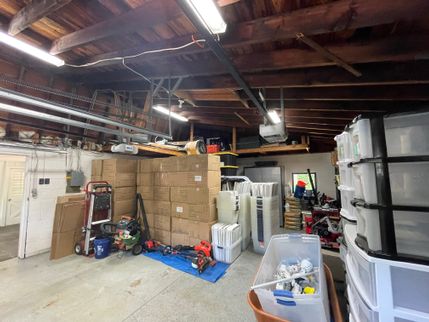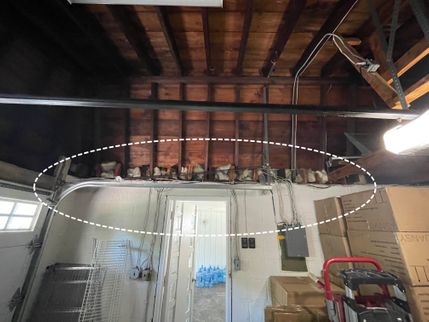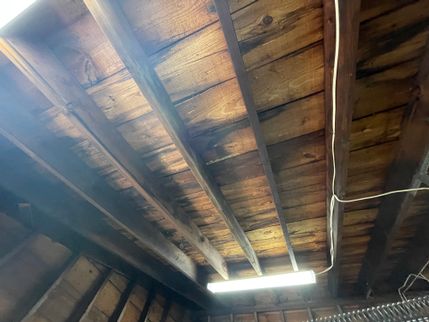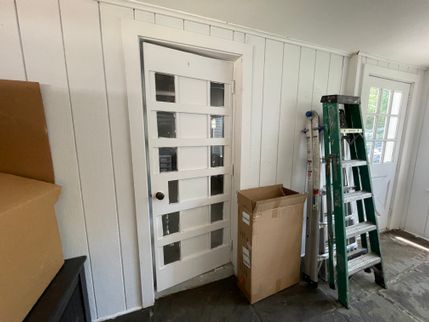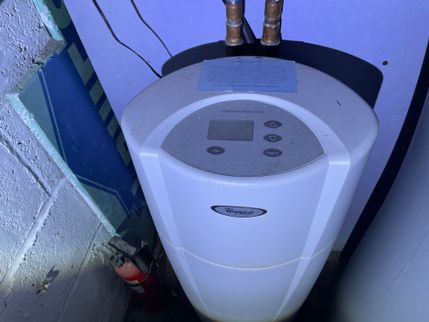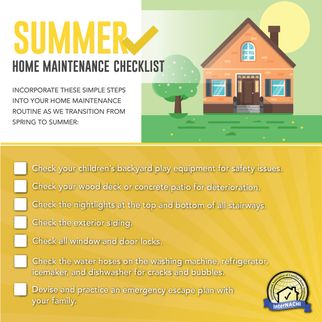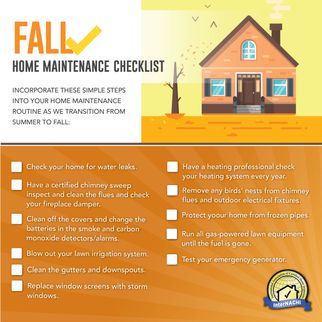
Andrew Merriweather, License #24GI00200600
Thank you for choosing Clever Inspections to inspect your new home! Please read your complete inspection report carefully. If you have any questions please don't hesitate to ask. I am dedicated to making sure you have as much information about your new home as possible, and am always happy to assist you.
WHAT IS A HOME INSPECTION?
As your Inspection Agreement states, a home inspection is a visual, non-invasive inspection of the systems and components of a home. This inspection was performed by a licensed inspector in accordance with the Standard of Practice and Code of Ethics of the New Jersey Administrative Code, which defines the items which must be inspected and reported on, as well as a number of important exclusions and limitations. A plain language summary of the relevant standards are included in the report at the beginning of each section, and the complete New Jersey Standards of Practice are available in full here as well as in the text below. I encourage you to read them in full.
A home inspection is intended to reduce risk by providing a professional opinion about its overall condition. My goal is to provide you with as much objective information about the home and its systems and components as possible, so that you are empowered as you move forward with the purchase. Concealed and latent defects, however, are always a possibility.
A home inspection is visual and not destructive. We inspect the aspects of the structure that can be viewed without dismantling, damaging or disfiguring the structure and without moving furniture and interior furnishings. Areas that are concealed, hidden or inaccessible to view are not covered by this inspection. Some systems cannot be tested during this inspection as testing risks damaging the building. For example, overflow drains on bathtubs are generally not tested because if they were found to be leaking, they could damage the finishes below.
A home inspection is limited not only to what we can observe, but to the conditions present at the time of inspection. Inclement weather, storage that blocks access, or unsafe conditions will all limit what we can inspect and report on.
This home inspection is my opinion based on my training and experience. Construction techniques and standards vary. Other inspectors and contractors are likely to have differing opinions. You are welcome to seek opinions from other professionals in the context of doing your due diligence.
WHAT ISN'T A HOME INSPECTION?
A home inspection is not a warranty or guarantee of future conditions - it is a snapshot in time. The systems of a home require maintenance, suffer wear and tear over time, and can fail unexpectedly.
The home inspection is not a code inspection or certification of any kind. It is not intended as a substitute for the Seller's Disclosure.
This home inspection is not an appraisal or a statement on the value of the home.
This home inspection is not an inspection for mold or other biological or environmental hazards, which can be present in any home. The noting in the report of the presence of materials commonly considered to contain asbestos, lead, or to be mold, or of the presence of evidence of pests, should not be construed to mean the inspector is inspecting for these things but instead should be seen as a casual observation and further evaluation by qualified professionals may be warranted. Only the appropriate professional, after conducting tests and analysis, can definitively identify these items.
WHO SHOULD PERFORM REPAIRS?
In my narrative observations, I may recommend evaluation, repair, or other actions be performed by "a qualified professional." The intention is that, for a trade that requires a license - electrical work, plumbing, HVAC, engineering, pest control application, general contractors, etc. - a licensed individual is contracted to perform the work. For work that does not require a professional license, the person hired should nonetheless be qualified to make the appropriate repairs. I encourage you to get multiple estimates for all repairs.
NOTICE TO THIRD PARTIES
This report is the joint property of Clever Inspections and Sample Client (the Client). Unauthorized use or distribution to any third parties is prohibited. The report and its supporting inspection represent the state of the property at the time of inspection, and was created under contract for the sole use of the named Client. It should not be relied upon by any other parties for any other purposes. Liability under this report is limited to the party for whom it was originally prepared.
NJAC 13:40-15.16 - STANDARDS OF PRACTICE
All home inspectors shall comply with the standards of practice contained in this section when conducting home inspections. The scope of home inspection services performed in compliance with the requirements set forth in this section shall provide the client with objective information regarding the condition of the systems and components of the home as determined at the time of the home inspection.
Nothing in this section shall be construed to require a home inspector to:
- Enter any area or perform any procedure which is, in the opinion of the home inspector, unsafe and likely to be dangerous to the inspector or other persons;
- Enter any area or perform any procedure which will, in the opinion of the home inspector, likely damage the property or its systems or components;
- Enter any area which does not have at least 24 inches of unobstructed vertical clearance and at least 30 inches of unobstructed horizontal clearance;
- Identify concealed conditions and latent defects;
- Determine life expectancy of any system or component;
- Determine the cause of any condition or deficiency;
- Determine future conditions that may occur including the failure of systems and components including consequential damage;
- Determine the operating costs of systems or components;
- Determine the suitability of the property for any specialized use;
- Determine compliance with codes, regulations and/ or ordinances;
- Determine market value of the property or its marketability;
- Determine advisability of purchase of the property;
- Determine the presence of any potentially hazardous plants, animals or diseases or the presence of any suspected hazardous substances or adverse conditions such as mold, fungus, toxins, carcinogens, noise, and contaminants in soil, water, and air;
- Determine the effectiveness of any system installed or method utilized to control or remove suspected hazardous substances;
- Operate any system or component which is shut down or otherwise inoperable;
- Operate any system or component which does not respond to normal operating controls;
- Operate shut-off valves;
- Determine whether water supply and waste disposal systems are public or private;
- Insert any tool, probe or testing device inside electrical panels;
- Dismantle any electrical device or control other than to remove the covers of main and sub panels;
- Walk on un-floored sections of attics; and
- Light pilot flames or ignite or extinguish fires.
Home inspectors shall inspect the following systems and components in residential buildings and other related residential housing components:
- Structural components as required below;
- Exterior components as required below;
- Roofing system components as required below;
- Plumbing system components as required below;
- Electrical system components as required below;
- Heating system components as required below;
- Cooling system components as required below;
- Interior components as required below;
- Insulation components and ventilation system as required below; and
- Fireplaces and solid fuel burning appliances as required below;
Home inspectors shall prepare a home inspection report which shall:
- Disclose those systems and components as set forth above which were present at the time of inspection;
- Disclose those systems and components as set forth above which were present at the time of the home inspection but were not inspected, and the reason(s) they were not inspected;
- Describe the systems and components specified in these standards of practice;
- State material defects found in systems or components;
- State the significance of findings where any material defects in the systems and components set forth above were found; and
- Provide recommendations regarding the need to repair, replace or monitor a system or component, or to obtain examination and analysis by a qualified professional, tradesman, or service technician.
Home inspectors shall retain copies of all home inspection reports prepared pursuant to above, for a period of five years upon completion of the report.
Nothing above is intended to limit home inspectors from:
- Inspecting or reporting observations and conditions observed in systems and components in addition to those required above and inspecting systems and components other than those mandated for inspection above as long as the inspection and reporting is based on the licensee's professional opinion, prior work experience, education and training, unless these standards of practice prohibit the home inspector from inspecting such system or component;
- Contracting with the client to provide, for an additional fee additional inspection services provided the home inspector is educated, trained, certified, registered or licensed, pursuant to the provisions of N.J.A.C. 13:40-15.22 and other applicable statutes and rules; and
- Excluding systems and components from the inspection if requested in writing by the client.
When conducting the inspection of the structural components, the home inspector shall:
- Inspect: foundation; floors; walls; ceilings; and roof;
- Describe: foundation construction type and material; floor construction type and material; wall construction type and material; ceiling construction type and material; and roof construction type and material;
- Probe: structural components where deterioration is suspected unless such probing would damage any finished surface; and
- Describe: in the home inspection report the methods used to inspect under-floor crawl spaces and attics.
When conducting the inspection of the exterior components, a home inspector shall:
- Inspect: exterior surfaces, excluding shutters, and screening, awnings, and other similar seasonal accessories; exterior doors excluding storm doors or safety glazing; windows excluding storm windows and safety glazing; attached or adjacent decks, balconies, stoops, steps, porches, and their railings; vegetation, grading, drainage, and retaining walls with respect to their immediate detrimental effect on the condition of the residential building, excluding fences, geological and/or soil conditions, sea walls, break-walls, bulkheads and docks, or erosion control and earth stabilization; attached or adjacent walkways, patios, and driveways; and garage doors including automatic door openers and entrapment protection mechanisms, excluding remote control devices; and
- Describe: exterior wall surface type and material
When inspecting the roof of a residential building, the home inspector shall:
- Inspect: roofing surface, excluding antennae and other installed accessories such as solar heating systems, lightning arresters, and satellite dishes; roof drainage systems; flashing; skylights; and exterior of chimneys;
- Describe: roof surface; roof drainage systems; flashing; skylights; and chimneys;
- Employ: reasonable, practicable and safe methods to inspect the roof such as: walking on the roof; observation from a ladder at roof level; or visual examination with binoculars from ground level; and
- Describe: the methods used to inspect the roof.
When inspecting the plumbing system, a home inspector shall:
- Inspect: interior water supply and distribution systems including functional water flow and functional drainage, excluding wells, well pumps, well water sampling or water storage related equipment, determination of water supply quantity or quality and water conditioning systems and lawn irrigation systems; all interior fixtures and faucets, excluding shut off valves, wells, well pumps, well water sampling and water storage related equipment; drain, waste and vent systems; domestic water heating systems, without operating safety valves or automatic safety controls, and excluding solar water heating systems; combustion vent systems excluding interiors of flues and chimneys; fuel distribution systems; and drainage sumps, sump pumps and related piping; and
- Describe: predominant interior water supply and distribution piping materials; predominant drain, waste and vent piping materials; and water heating equipment including energy sources.
When inspecting the electrical system, a home inspector shall:
- Inspect: service entrance system; main disconnects, main panel and sub panels, including interior components of main panel and sub panels; service grounding; wiring, without measuring amperage, voltage or impedance, excluding any wiring not a part of the primary electrical power distribution system, such as central vacuum systems, remote control devices, telephone or cable system wiring, intercom systems, security systems and low voltage wiring systems; over-current protection devices and the compatibility of their ampacity with that of the connected wiring; at least one of each interior installed lighting fixture, switch, and receptacle per room and at least one exterior installed lighting fixture, switch, and receptacle per side of house; and ground fault circuit interrupters; and
- Describe: amperage and voltage rating of the service; location of main disconnect, main panels, and sub-panels; type of over-current protection devices; predominant type of wiring; presence of knob and tube branch circuit wiring; and presence of solid conductor aluminum branch circuit wiring.
When inspecting the heating system, a home inspector shall:
- Inspect: installed heating equipment and energy sources, without determining heat supply adequacy or distribution balance, and without operating automatic safety controls or operating heat pumps when weather conditions or other circumstances may cause damage to the pumps, and excluding humidifiers, electronic air filters and solar heating systems; combustion vent systems and chimneys, excluding interiors of flues or chimneys; fuel storage tanks, excluding propane and underground storage tanks; and visible and accessible portions of the heat exchanger; and
- Describe: heating equipment and distribution type; and energy sources.
When inspecting the cooling system, a home inspector shall:
- Inspect: central cooling system, excluding electronic air filters and excluding determination of cooling supply adequacy or distribution balance and without operating central cooling equipment when weather conditions or other circumstances may cause damage to the cooling equipment; permanently installed hard-wired, through-wall individual cooling systems; and energy sources; and
- Describe: cooling equipment and distribution type; and energy sources.
When inspecting the interior of a residential building, a home inspector shall:
- Inspect: walls, ceilings, and floors excluding paint, wallpaper and other finish treatments, carpeting and other non-permanent floor coverings; steps, stairways, and railings; installed kitchen wall cabinets to determine if secure; at least one interior passage door and operate one window per room excluding window treatments; and household appliances limited to: the kitchen range and oven to determine operation of burners or heating elements excluding microwave ovens and the operation of self-cleaning cycles and appliance timers and thermostats; dishwasher to determine water supply and drainage; and garbage disposer.
When inspecting the insulation components and ventilation system of a residential building, the home inspector shall:
- Inspect: insulation in unfinished spaces without disturbing insulation; ventilation of attics and crawlspaces; and mechanical ventilation systems; and
- Describe: insulation in unfinished spaces adjacent to heated areas; and evidence of inadequate attic and crawlspace ventilation.
When inspecting fireplaces and solid fuel burning appliances, a home inspector shall:
- Inspect: fireplaces and solid fuel burning appliances, without testing draft characteristics, excluding fire screens and doors, seals and gaskets, automatic fuel feed devices, mantles and non-structural fireplace surrounds, combustion make-up air devices, or gravity fed and fan assisted heat distribution systems; and chimneys and combustion vents excluding interiors of flues and chimneys; and
- Describe: type of fireplaces and/or solid fuel burning appliances; energy source; and visible evidence of improper draft characteristics
CLICK HERE for a complete copy of NJAC 13:40 Subchapter 15: Home Inspection Advisory Committee, or go to the Home Inspection Advisory Committee page of the New Jersey State Department of Consumer Affairs
How to Read This Report
Getting the Information to You
This report is designed to deliver important and technical information in a way that is easy for anyone to access and understand. If you are in a hurry, you can take a quick look at our "Summary Page” and quickly get critical information for important decision making. However, we strongly recommend that you take the time to read the full Report, which includes digital photographs, captions, diagrams, descriptions, videos, and links to additional information.
The best way to get the layers of information that are presented in this report is to read your report online, which will allow you to expand your learning about your house. You will notice some words or series of words highlighted in blue and underlined – clicking on these will provide you with a link to additional information.
This report can also be printed on paper or to a PDF document.
Chapters and Sections
This report is divided into chapters that parcel the home into logical inspection components. Each chapter is broken into sections that relate to a specific system or component of the home. You can navigate between chapters with the click of a button on the left side margin.
Most sections will contain some descriptive information done in black font. Observation narratives, done in colored boxes, will be included if a system or component is found to be significantly deficient in some way or if we wish to provide context or additional information about the system or the scope of our inspection. If a system or component of the home was deemed to be functioning as intended, in a condition consistent with its age, or with no significant defects, there may be no narrative observation comments in that section and it may simply be noted as “Satisfactory.”
Observation Labels
All narrative observations are colored, numbered and labeled to help you find, refer to, and understand the severity of the observation. Observation colors and labels used in this report are:
- Description:Detailed description of various aspects of the property noted during the inspection.
- Note:Refers to aside information and /or any comments elaborating on descriptions of systems in the home or limitations to the home inspection.
- Significant Defect:These items describe specific issues with a system or component of a residential property that may have a significant, adverse impact on the value of the property, or that pose an unreasonable risk to people or property. These items require a qualified contractor to address properly.
- Marginal Defect:These items may be considered defective, in need of repair or replacement, show obvious signs of concern and damage, or may be unsafe. If not addressed, these items will inevitably lead to or directly cause conditions that may adversely affect the value of the property or pose unreasonable safety risks. They require a qualified professional to address properly.
- Minor / Maintenance:This section includes routine maintenance items or handyman / do-it-yourself repairs. It may also include observations of normal wear and aging. These observations are informational in nature and represent more of a future to-do list rather than items of immediate concern. Neglecting these items in the long term, however, may lead to more serious conditions.
- Improve:Observations that are not necessarily defects, but which could be improved for safety, efficiency, or reliability reasons.
- Monitor:Items that should be watched to see if correction may be needed in the future.
- Due Diligence:Observations such as recommending a Level II Chimney Inspection or signs of a buried oil tank that may require further investigation prior to the end of your contingency period to determine the severity and / or urgency of repair.
- Report Information:This is information about the report itself, rather than the systems or components of the home.
Pest Inspection
All items with the bug logo () are part of a structural pest inspection. If your inspector included a structural pest inspection as a part of the scope of your home inspection, you can distinguish pest inspection items by this logo. You can also go to the pest inspection summary page to see a summary of the items that are part of a pest inspection.
Summary Page
The Summary Page is designed as a bulleted overview of all the observations noted during inspection. This helpful overview is not a substitution for reading the entire inspection report. The entire report must be read to get a complete understanding of this inspection report as the Summary Page does not include photographs, photo captions, or many of the notes that provide additional context and information.
Summary
Notes
- GC-4 General Comments:
This home was occupied at the time of the inspection. Inspection of occupied homes presents some challenges as occupant belongings can obstruct visual inspection of and access to parts of the building. We do our best during inspection to work around belongings to discover as much as possible about the house without moving or damaging personal property, however, the presence of personal items does limit the inspection.
- GC-5 General Comments:
Orientation and directions in the report - For the purposes of this report, the front door faces East. As you are facing the front door, the left side of the building is South and the right side is North. "East" refers to the side of the home nearer the street, and "West" refers to the side of the home nearer the backyard.
- E-6 Exterior:
The wood decking on this deck has been painted instead of stained / weather sealed. Painting is never recommended as this can trap water in the decking and facilitate decay.
- FS-3 Foundation and Structure:
The structure of a home, for the most part, is not accessible for visual inspection. We will inspect any accessible structural components (beams & joists visible from the basement or crawlspace, for example) and the visible finished surfaces for indirect indications of defects, such as sagging, cracking, sloping, or stains. No representation or comment can be made concerning defects that are not reasonably observable at the time of inspection. For example, structural members behind finished surfaces or evidence of leaks that have been concealed by repairs or paint cannot be observed.
- FS-4 Foundation and Structure:
The basement was largely finished, which limited the inspection of the foundation. The portions I could see were masonry block and appeared to be in satisfactory condition. Concealed damage behind the finished surfaces is always a possibility, however.
- FS-5 Foundation and Structure:
The basement was largely finished, which as noted above limited the inspection of the foundation. Monitor the finished surfaces for signs of water intrusion from the foundation wall behind.
- FS-6 Foundation and Structure:
The basement tile floor is laid over the slab below, hiding it from view. Concealed racks or other damage to the slab that may allow water intrusion are a possibility. Monitor the basement for water intrusion, especially in very wet conditions, as noted in (IV-7).
- FS-10 Foundation and Structure:
Note that parts of this house have a vaulted ceiling configuration - there is no attic space and no access to inspect roof framing, thermal barriers or fans exhaust ductwork in these vaulted parts of the house.
- FS-13 Foundation and Structure:
The framing of a home, for the most part, is not accessible for visual inspection. I inspect any accessible structural components (beams & joists visible from the basement or crawlspace, for example) and the visible finished surfaces for indirect indications of defects, such as sagging, cracking, sloping, or stains. No representation or comment can be made concerning defects that are not reasonably observable at the time of inspection. For example, structural members behind finished surfaces or evidence of leaks that have been concealed by repairs or paint cannot be observed.
- IV-6 Insulation and Ventilation:
The basement insulation was for the most part not visible, being concealed behind finished surfaces. The small amount of insulation that was visible appeared to be in satisfactory condition, however missing or damaged insulation or other concealed defects are a possibility. Investigate and assess the basement insulation that becomes accessible as a part of any future repairs or improvements.
- IV-8 Insulation and Ventilation:
Under deck moisture conditions are described above in (FS-8) and are not repeated here.
- P-4 Plumbing:
Copper water supply pipes were installed. Copper pipes installed prior to the late 1980s may be joined with solder that contains lead, which is a known health hazard especially for children. Laws were passed in 1985 prohibiting the use of lead in solder, but prior to that solder normally contained approximately 50% lead. The client should be aware of this, especially if children will be using this water supply system. Note that the inspector does not test for toxic materials such as lead. The client should consider having a qualified lab test for lead, and if necessary take steps to reduce or remove lead from the water supply. Various solutions include:
- Flush water taps or faucets. Do not drink water that has been sitting in the plumbing lines for more than 6 hours
- Install appropriate filters at points of use
- Use only cold water for cooking and drinking, as hot water dissolves lead more quickly than cold water
- Treat well water to make it less corrosive
- Have a qualified plumber replace supply pipes and/or plumbing components as necessary
- E1-8 Electric:
Carbon monoxide alarms were found and noted during inspection. Be sure to check these regularly. The standard is 1/ floor and 1 outside all sleeping areas.
- I-5 Interiors:
I believe the breezeway was once an exterior carport. There is staining on the stone floor consistent with automobile stains and an odor of petroleum. Depending on your plans for this space you may wish to investigate deep cleaning options to remove the stains and odor.
- G1-3 Garage:
Extensive storage in the garage inhibited the view of most of the garage and limited visual inspection of this space.
Significant Defects
- R-4 Roof:
The roofing material on the flat sections of roof is rolled roofing. The service life of these roofs can vary depending on the quality of the membrane and the quality of the installation, including how well the roof is sloped to drain, and they often have roughly 10 years of reliable service life beyond which regular repairs are often needed. With on-going maintenance these roofs can be made to last as long as 25 years. Several red flags were noted during inspection that indicate this roof is failing and requires replacement. Hire a licensed roofing contractor to further evaluate and repair as recommended. Examples of observations noted during inspection include:
- loss of reflective coating
- deterioration of the roofing material - cracking / flaking
- a large "soft spot" indicative of concealed structural damage - see Foundation and Structure (FS-12)
- exposed nail heads
Additional concealed damage may be present. It is important to have this roof and its structure fully evaluated by a qualified roofer.
- E-5 Exterior:
Overall, this is an old deck. Numerous repairs are needed to the decking systems on this house to ensure safe and reliable performance. Some of these repairs can be made, while other issues simply are the way they are until the deck is rebuilt. Additional inspection and repair of this deck should be conducted by a qualified general contractor. Examples of observations and defects noted during inspection include:
- Rot in the wooden framing and decking, especially on the perimeter
- Rot on the underside of the decking
- Painted deck coating, which is trapping moisture
- Tune up repairs needed on stairs
Additional concealed damage is probable. It is important to have this deck (and the balcony - see below) evaluated and repaired as needed for continued safe use.
- E-7 Exterior:
Numerous repairs are needed to the balcony on this house to ensure safe and reliable performance. Some of these repairs can be made, while other issues simply are the way they are until the balcony is rebuilt. Additional inspection and repair of this deck should be conducted by a qualified general contractor. Examples of observations and defects noted during inspection include:
- Rot at the base of the columns
- Rot in some of the decking
- Undersized posts
- No guardrail posts, just balusters
- Painted deck coating, which is trapping moisture and accelerating decay
- Organic growth on the underside, a symptom of chronic dampness which can contribute to the deterioration of the framing.
Additional concealed damage is probable. It is important to have this balcony (and the deck - see above) evaluated and repaired as needed for continued safe use.
- FS-12 Foundation and Structure:
As noted in Roof (R-4), there is probable structural damage to the roof framing in the vaulted ceiling over the dining room. As this is a vaulted ceiling with no access, invasive methods will be required to access the framing to determine the extent of the damage and to make repairs. Failure to address this issue will lead to failure of the roof. It is vital that the roof framing be evaluated by a qualified contractor and / or structural engineer as soon as possible to determine the scope of the necessary repairs.
Marginal Defects
- G-4 Grounds:
Two pipes from an old underground drainage system were present on the East side of the home. Any unused pipes should be capped for safety.
- G-5 Grounds:
Several of the basement window wells are full of vegetation and organic debris. They need to be cleaned to eliminate a condition conducive to wood destroying organisms. Remove all soils and vegetation and repair any hidden rot to the window trim or adjacent wooden components as needed.
- R-5 Roof:
There are exposed nail heads in several locations on the roof. The nail heads should be sealed to prevent moisture intrusion when possible, perhaps when other roof work is being done.
- R-6 Roof:
Clean organic debris from the roof to ensure unrestricted paths for roof drainage. This is routine maintenance that should be part of a regular maintenance schedule.
- R-10 Roof:
The masonry chimney is missing a reliable concrete cap and just has a mortar or cement wash to shed water. This is less reliable than a cap and can lead to premature water entry and water damage of the masonry. I recommend having this chimney further investigated and repaired as recommended by a qualified chimney sweep or mason.
- R-11 Roof:
I recommend having a cricket flashing installed for this chimney to divert water around the chimney. The current installation is vulnerable to leaks as the entire roof drains toward the chimney. Please note that modern standards require chimney cricket flashings when the chimney is at the bottom of a roof and more than 30 inches wide.
- R-12 Roof:
Organic growth was noted on the masonry chimney - see photos in (R-10) and (R-11). This can be bad for the chimney and trap water in the masonry and hasten deterioration of brick and mortar. Consult with a qualified mason about options for cleaning and sealing the chimney and repairing failing mortar or sealing any cracks as needed.
- R-13 Roof:
The metal cleanout cover for the masonry chimney is corroded and obstructed. It should be evaluated by a qualified chimney sweep as part of a larger chimney inspection as noted above.
- E-4 Exterior:
The screen of the sliding glass door is not sliding smoothly and requires adjustment.
- FS-9 Foundation and Structure:
The photos provided here show representative images of the under deck crawl space at the time of inspection. The space is damp and from the condition of the deck planking I believe there to be a chronic moisture problem. Corrugated plastic has been added under the deck, possibly in an attempt to drain rainwater, but it is likely that instead of draining the rainwater is pooling and evaporating under the deck, adding to the ambient moisture. As part of deck repairs the under deck grading should be completely evaluated with a focus on drainage and ventilation.
- IV-3 Insulation and Ventilation:
The attic insulation is damaged and incomplete in places. For improved energy efficiency and to reduce heat loss, repair the incomplete thermal barriers and re-insulate to modern standard or to best possible levels. Be sure to seal up all air leakage points during repairs.
- F-4 Fireplaces:
The facade of the fireplace is cracked. This is possibly related to the repairs noted on the exterior of the chimney in (R-13). As noted in the chimney section, I recommend a Level II inspection of the fireplace and chimney by a licensed chimney sweep and correction or repair as needed.
- E1-3 Electric:
The electric panel had inadequate working clearance. This presents a potential safety hazard, especially for people working on or inspecting the electric panel. A 30-inch wide and 36-inch deep unobstructed working clearance is recommended for improved safety. Consult with a general contractor or licensed electrical contractor to further evaluate this condition and relocate the panel or improve clearances and access as needed.
- E1-7 Electric:
Several receptacles were inoperative at the time of inspection, including the ones in:
- the breezeway
- high on the back wall, to the left of the deck
- the deck
Have the inoperative receptacles repaired by a qualified electrician.
- I-7 Interiors:
There is evidence of water damage on the interior and exterior of the closet closest to the breezeway entry door from the interior of the home. Have the damage repaired by a qualified professional. Depending on the cause, additional concealed damage is a possibility and may be revealed in the course of repairs.
- I-8 Interiors:
Several interior doors are not latching correctly and require adjustment so the doors latch closed. See:
- Master Bedroom Hall Closet
- Guest Bedroom Closet Door
- Basement Door to Under Deck Space
- I-9 Interiors:
One of the bifold doors for the master bath closet is missing. Have the door replaced as desired.
- I-10 Interiors:
One of the garage windows is broken. This requires glazing replacement to repair.
- I-11 Interiors:
The windows in the breezeway do not open. It is unclear if they were purposely sealed shut or not. Have them repaired to restore functionality as desired.
- K-3 Kitchen:
The two right burners did not light when tested, but functioned otherwise. Have the auto-light function repaired for improved safety and convenience by a qualified professional.
- K-5 Kitchen:
The handle for the kitchen faucet is missing. The faucet is still operable, but it should be replaced.
- K-6 Kitchen:
The spray switch for the kitchen faucet is inoperative and stuck in spray mode. Repair or replace the sprayer as desired.
- MB-7 Master Bathroom:
The toilet tissue holder is not properly connected to the wall and needs to be repaired or replaced.
- GB-1 Guest Bathroom:
The stopper for the guest bathroom sink is inoperative, and does not open once closed without assistance (I had to use a screwdriver to nudge it open when I tested it) and should be replaced.
- GB-2 Guest Bathroom:
The shower diverter in the guest bathroom is inoperative and should be repaired or replaced to restore shower function.
- DB-1 Downstairs Bathroom:
The stopper for the downstairs bathroom sink is inoperative - it does not close and should be repaired or replaced.
- DB-2 Downstairs Bathroom:
The shower diverter in the downstairs bathroom is inoperative and should be repaired or replaced to restore shower function.
- G1-4 Garage:
The use of sheetrock is recommended to make a fire separation between the garage and the house. This will improve the safety of the house in the event of an accidental fire in the garage. It is common in older homes to have wood walls in the garage. This would not be considered safe by modern fire standards. Consult a qualified professional about updating the garage to provide fire separation.
- G1-6 Garage:
The door between the garage and the house is not a rated door. Rated doors are important fire safety protection to slow a fire from spreading from the garage into the house. Garage occupant doors should have a UL listing plate for a minimum 20-minute rating. Solid wood doors at least 1 and 3/8th-inches thick are also considered to be rated for 20-minutes. Have this door replaced with a fire door as part of the general fire separation updates to the garage.
Minor / Maintenance Items
- R-7 Roof:
The gutters are protected with gutter guards, but the guards themselves are clogged with organic debris and require cleaning to ensure proper control of roof runoff. Clean the gutters and ensure they are unobstructed, leak free and properly sloped to drain.
- R-9 Roof:
The NFPA (National Fire Protection Association) recommends an annual inspection of all chimneys, fireplaces, solid fuel-burning appliances, and vents. They also recommend an NFPA 211 Standard, Level II inspection upon sale or transfer of the property. A Level II inspection includes, not only cleaning the interior of the chimney pipe, but also the use of specialized tools and testing procedures such as video cameras, etc. to thoroughly evaluate the serviceability of the entire flue lining and fireplace/chimney system. Level II inspections are not always needed, especially for short simple flues that can be inspected visually after a cleaning. If a chimney cleaning has not been performed over the past 12 months, such an inspection is recommended before home changes ownership---for fire safety reasons. Implement any repairs as recommended.
- E-8 Exterior:
The balcony decking is covered with organic debris, which will trap moisture and can become slippery. Keep the balcony clear of organic material as part of your regular maintenance. There is also an accumulation of organic debris against the north side of the balcony decking where it intersects the roof, which will trap moisture against the framing and contribute to the deterioration of the framing.
- E1-6 Electric:
Multiple inoperative lights were noted: This is likely due to bulbs being burned out, but could be due to an inoperative fixture, circuit or switch. Replace bulbs or repair lights as needed.
- I-6 Interiors:
The drywall / sheetrock finishes require some tune-up repair: See localized cracking, nail pops and minor cracks. No red flags were found to indicate structural movement. Repair sheetrock blemishes as desired.
- K-4 Kitchen:
The ice maker functioned but water would not dispense. Inquire with seller about the condition of the ice / water dispenser and repair as desired.
- MB-5 Master Bathroom:
The light in the shower was inoperative at the time of inspection. It may be the bulb, or a faulty switch or circuit.
- G1-7 Garage:
Typical cracks were noted in the garage slab. No immediate repair appears necessary, though it should be sealed on a regular basis to prevent salt and water damage.
Improves
- R-8 Roof:
The drain spouts of the upper roof of the main house are discharging onto the garage roof directly. The concentrated runoff from the drain spouts will accelerate the deterioration of the roof covering in this location. Extending the downspouts to the garage roof gutter will extend the useful life of the roof covering.
- E-9 Exterior:
The deck posts are done using 4x4 lumber. Current construction standards recommend a minimum 6x6 post for all decks. The posts should be upgraded for safety as part of any balcony repairs.
- E-10 Exterior:
The deck guardrail is not using any 4x4 posts, just smaller spindles or balusters. Modern deck guardrail requirements recommend a 4x4 post at minimum intervals of 6 feet. The guardrails should be upgraded for safety as part of any balcony repairs.
- L-3 Laundry:
A moisture alarm with water shut-off features is recommended under the washing machine to protect against accidental leaks in the supply hoses. Pans can be effective when there is a drain, but even these will not protect against a burst supply connector. A moisture alarm with automatic shut-off will. Watts is a brand I have seen installed: Link.
Monitors
- G-3 Grounds:
There is inadequate clearance between the siding and the soils. This is conducive to wood destroying organisms as it can trap water against the siding. Where possible, a gap should be provided to allow the wood to keep dry. Generally, a 6-inch clearance is recommended between siding and soils. Please note that this is a fairly common installation, and inadequate clearances can often be kept maintained by being diligent about keeping new soils, mulch and leaves from accumulating.
- IV-7 Insulation and Ventilation:
Water was present in the basement at the time of inspection. The source of the water was not readily apparent, and can not be determined over the course of a general home inspection. It is possible it is a result of the heavy rains the day before inspection. Inquire with the seller about basement water conditions in general and monitor the basement, especially after heavy rain, to determine the source of the water and what steps are required to mitigate the moisture.
- G1-5 Garage:
I observed staining consistent with past water intrusion on the garage ceiling framing. No signs of current moisture were noted, however conditions could change at any time. Monitor the garage structure, especially during wet weather.
Due Diligences
- G-6 Grounds:
An arborist should be hired to further evaluate the large trees on the property and prune or remove as recommended. Whenever large trees are located near a house a higher level of maintenance should be expected to keep trees safe and healthy and to eliminate the risks of damage to the home or building materials and to eliminate rodent entry points. With larger trees such as firs pruning is recommended to eliminate the sail effect and reduce strain on these tress during high winds. If an arborist has not been out in the last few years, I recommend a new consultation.
- G-7 Grounds:
There is a large play structure in the backyard. Structures such as this are not in the scope of a general home inspection and are excluded by the New Jersey Standards of Practice. From my casual examination of the exterior, the play structure appeared to be in satisfactory condition; it should not, however be considered to have been inspected. The play structure should be given a thorough check to make sure that all hardware is present and properly tightened before children are allowed to use it.
- R-14 Roof:
Sealant was present at the junction of the chimney and the siding on the North side. Inquire with the seller as to the nature of the repairs in this area.
- R-15 Roof:
The skylights throughout the home were in satisfactory condition at the time of inspection and no sign of current leakage was observed. Skylights are, however, prone to leakage in general and should be monitored as part of your routine maintenance.
- FS-11 Foundation and Structure:
I observed a rodent bait station, mouse droppings, and wood remnants that may be from rodent activity. Inquire with the seller about the conditions that led to the bait station being placed and have the attic further evaluated by a pest control specialist.
- IV-5 Insulation and Ventilation:
No moisture was observed at the time of inspection, however some of the insulation is damaged by possible past moisture issues - see (IV-3) above. Inquire with the seller about attic conditions over time.
- P-5 Plumbing:
A video camera sewer scope is recommended. An evaluation of the sewer line below the ground is beyond the scope of this inspection. Due to the age and location of the building, a sewer scope is recommended to further evaluate the sewer line and the below ground connections between the house and the municipal sewer line. Sewer scopes are done using video cameras and can reveal the materials, condition and reliability of the sewer line. If that has been done recently, I recommend having a sewer scope performed.
- MB-4 Master Bathroom:
The water jet function in the master bath tub did not respond to controls. I also could not locate the pump access. Inquire with the seller about the state of the water jets - it is possible they no longer operate, or are simply not connected - and proceed with repair by a qualified professional as needed.
- MOS-2 Miscellaneous / Out of Scope:
The home had a Nest smart thermostat installed. Make sure to ask the seller for all documentation, including any screen-lock codes or passwords.
- MOS-3 Miscellaneous / Out of Scope:
A water filtration system was noted in the house - it is located near the water heater. Evaluation of this system or water quality is beyond the scope of this inspection. I recommend inquiring with the seller for any maintenance, warranty or installer information that pertains to this system. If the system has not been serviced recently, have the filter system serviced and filters cleaned or replaced as a part of the recommended maintenance schedule.
The manufacturer page for this unit with specifications and manuals can be found here.
- MOS-4 Miscellaneous / Out of Scope:
A water softening system was noted in the house - it is located near the water heater. Evaluation of this system and water quality is beyond the scope of this inspection. I recommend inquiring with the seller for any maintenance, warranty or installer information that pertains to this system. If the system has not been serviced recently, have the filter system serviced and filters cleaned or replaced as a part of the recommended maintenance schedule.
The manufacturer page for this unit with specifications and manuals can be found here.
- TR-1 Things to Remember:
Remember to ask the seller for:
• Paint colors / extra paint
• Manuals for all appliances
• Maintenance and Warranty Records
• Any extra tile or flooring materials set aside for repairs
• The names of any companies that have done past maintenance
• All keys and codes
- TR-2 Things to Remember:
Here are some basic seasonal maintenance tips for your reference.
The Full Report
General Comments
Building Characteristics and Conditions
Style of Home: Ranch
Type of Building : Single Family (2-story)
Approximate Square Footage: 2900
Approximate Year of Original Construction: 1960
Attending the Inspection: Buyer and Buyer's Agent
Occupancy: Occupied
Weather during the inspection: Hot and Humid
Approximate temperature during the inspection: Over 80[F]
Ground/Soil surface conditions: Damp
For the Purposes of This Report, the Front Door Faces: East
The approximate square footage listed here is listed as a courtesy and is based off of public records and disclosure. An evaluation of square footage of the buildings and property lines is beyond the scope of this inspection.
Unless the wiring in the building has been fully updated, this building likely has wiring that predates the late 1980's. Branch circuit wiring installed in buildings built prior to the late 1980s is typically rated for a maximum temperature of only 60 degrees Celsius. This includes non-metallic sheathed (Romex) wiring, and both BX and AC metal-clad flexible wiring. Knob and tube wiring, typically installed in homes built prior to 1950, may be rated for even lower maximum temperatures. Newer electric fixtures including lighting and fans typically require wiring rated for 90 degrees Celsius. Connecting newer fixtures to older, 60-degree-rated wiring is a potential fire hazard. Repairs for such conditions may involve replacing the last few feet of wiring to newer fixtures with new 90-degree-rated wire, and installing a junction box to join the old and new wiring. It is beyond the scope of this inspection to determine if any such incompatible components are installed. Based on the age of this building, be aware that such components may be present. Consult with an electrical contractor if further investigation is desired.
In 1978, federal laws were past to prohibit use of lead and asbestos in building materials. Manufacturers of building materials were allowed to sell existing stocks of materials that were manufactured with lead and asbestos, so even buildings constructed as late as the mid-1980's could possibly contain lead or asbestos. Identification and testing for lead and asbestos and other environmental testing is beyond the scope of this home inspection. If you wish to seek additional information, I recommend contacting an environmental lab or industrial hygienist.
This home was occupied at the time of the inspection. Inspection of occupied homes presents some challenges as occupant belongings can obstruct visual inspection of and access to parts of the building. We do our best during inspection to work around belongings to discover as much as possible about the house without moving or damaging personal property, however, the presence of personal items does limit the inspection.
Orientation and directions in the report - For the purposes of this report, the front door faces East. As you are facing the front door, the left side of the building is South and the right side is North. "East" refers to the side of the home nearer the street, and "West" refers to the side of the home nearer the backyard.
Grounds
Scope, Purpose, and Limitations
What is inspected, and what is not? The visible and accessible grounds and surfaces adjacent to the residence were inspected with respect to their immediate effect on the structure of the home and for functional and safety concerns. We will report on any observed deficiencies such as: pooling, negative grading, vegetation encroachment, significant cracking, displacement, or other damage.
Outbuildings (except Garages or Carports, which are addressed separately), fences, geological and/or soil conditions, sea walls, break-walls, bulkheads, docks, erosion control or earth stabilization are beyond the scope and capacity of a general home inspection and are excluded by the New Jersey Standards of Practice. Any comments regarding excluded systems or components present on the grounds are our casual observations and opinions and are presented as a courtesy only.
What are the limits of the inspection? The inspection of the grounds and surfaces adjacent to the residence is limited to conditions visible at the time of inspection. Typically, this includes inspection of the surfaces themselves. Concealed material defects are always a possibility. For example, exact paths of drainage or water flow, sub-surface conditions, or the determination if settling is complete or ongoing cannot be observed in the course of a home inspection or reported on. Concealed or latent defects are excluded from a home inspection by the New Jersey Standards of Practice.
Drainage and Site
Site Description: Flat
Clearance to Grade: Siding Too Close to Soils - Monitor
Downspout Discharge: Above grade
Concern(s): Soil in Contact with Siding, Uncapped Pipes
Two pipes from an old underground drainage system were present on the East side of the home. Any unused pipes should be capped for safety.
There is inadequate clearance between the siding and the soils. This is conducive to wood destroying organisms as it can trap water against the siding. Where possible, a gap should be provided to allow the wood to keep dry. Generally, a 6-inch clearance is recommended between siding and soils. Please note that this is a fairly common installation, and inadequate clearances can often be kept maintained by being diligent about keeping new soils, mulch and leaves from accumulating.
Driveway
Notation: Satisfactory
Material: Asphalt
Walkways
Notation: Satisfactory
Material: Brick
Patios
Notation: Satisfactory
Patio Material: Pavers
Window and Stairwells
Concern(s): Soil in Contact with Basement Windows
Window Well (No Provision for Drainage - No Red Flags - Monitor, Organic Debris)
Several of the basement window wells are full of vegetation and organic debris. They need to be cleaned to eliminate a condition conducive to wood destroying organisms. Remove all soils and vegetation and repair any hidden rot to the window trim or adjacent wooden components as needed.
Trees and Vegetation
Trees/Vegetation too near building: Arborist Recommended
An arborist should be hired to further evaluate the large trees on the property and prune or remove as recommended. Whenever large trees are located near a house a higher level of maintenance should be expected to keep trees safe and healthy and to eliminate the risks of damage to the home or building materials and to eliminate rodent entry points. With larger trees such as firs pruning is recommended to eliminate the sail effect and reduce strain on these tress during high winds. If an arborist has not been out in the last few years, I recommend a new consultation.
Front Stairs & Landing
Notation: Satisfactory
Material: Stone
Outbuildings, Trellises, Storage Sheds, Barns
Notation: Out of Scope
Type: Play Structure
Location: Backyard
There is a large play structure in the backyard. Structures such as this are not in the scope of a general home inspection and are excluded by the New Jersey Standards of Practice. From my casual examination of the exterior, the play structure appeared to be in satisfactory condition; it should not, however be considered to have been inspected. The play structure should be given a thorough check to make sure that all hardware is present and properly tightened before children are allowed to use it.
Roof
Scope, Purpose, and Limitations
What is inspected, and what is not? The visible and accessible portions of the roof surfaces, drainage systems, and penetrations were inspected with respect to diverting water away from the home, for signs of damage, and for functional and safety concerns. We will describe the roof surface materials, drainage systems, flashing, skylights, chimney exteriors, and the method used to inspect the roof. We will report on any observed deficiencies such as improper materials, installation deficiencies, visible presence of water, or other damage.
The interior of flues and chimneys, below ground drainage systems, and installed accessories such as antennae, solar heating or electric systems, lightning arresters, satellite dishes, or performing any procedure deemed unsafe are beyond the scope and capacity of a general home inspection and are excluded by the New Jersey Standards of Practice. Any comments regarding excluded systems or components present on the roof are our casual observations and opinions and are presented as a courtesy only.
What are the limits of the inspection? Many components of the roof systems are hidden behind the exterior covering materials and are not accessible for visual inspection. Accessible roof system components typically include the outermost layer of covering material, the exterior of the chimney and other penetrations, and above ground drainage components. Because we are limited to visual and non-invasive methods under the conditions present at the time of inspection, concealed defects are always a possibility. For example, leaks only present during heavy rain, underlayment hidden under shingles, the condition of below ground drainage piping, or defects in the chimney flue lining cannot be observed in the course of a home inspection or reported on. Concealed or latent defects are excluded from a home inspection by the New Jersey Standards of Practice.
Roof Materials
Concern(s): Flat roofing deteriorated, "Soft spot" in roof over dining room, Exposed nail heads throughout
Roof Covering Materials: Architectural grade composition shingle, Rolled roofing
Roof Style: Gable, Flat
Method of Roof Inspection: Walked on roof
Flashings: Present and Visually Standard
Roof flashings are used to keep a roofing system waterproof where the roofing material starts, stops, changes direction, or is penetrated. During inspection, we look for standard flashing techniques that could be considered normal or standard in our region. Damaged, incomplete or non-standard flashings can be a sign of an older or less reliable roofing system and may require repair. Any non-standard flashings noted during inspection will be reported on below if found.
The roofing material on the flat sections of roof is rolled roofing. The service life of these roofs can vary depending on the quality of the membrane and the quality of the installation, including how well the roof is sloped to drain, and they often have roughly 10 years of reliable service life beyond which regular repairs are often needed. With on-going maintenance these roofs can be made to last as long as 25 years. Several red flags were noted during inspection that indicate this roof is failing and requires replacement. Hire a licensed roofing contractor to further evaluate and repair as recommended. Examples of observations noted during inspection include:
- loss of reflective coating
- deterioration of the roofing material - cracking / flaking
- a large "soft spot" indicative of concealed structural damage - see Foundation and Structure (FS-12)
- exposed nail heads
Additional concealed damage may be present. It is important to have this roof and its structure fully evaluated by a qualified roofer.
There are exposed nail heads in several locations on the roof. The nail heads should be sealed to prevent moisture intrusion when possible, perhaps when other roof work is being done.
Roof Gutters and Downspouts
Notation: Mostly Satisfactory
Concern(s): Upper Roof discharging to lower roof
Gutter and Downspout Materials: Aluminum
The gutters are protected with gutter guards, but the guards themselves are clogged with organic debris and require cleaning to ensure proper control of roof runoff. Clean the gutters and ensure they are unobstructed, leak free and properly sloped to drain.
The drain spouts of the upper roof of the main house are discharging onto the garage roof directly. The concentrated runoff from the drain spouts will accelerate the deterioration of the roof covering in this location. Extending the downspouts to the garage roof gutter will extend the useful life of the roof covering.
Fireplace Chimney
Concern(s): Cricket needed, Organic growth noted, No drip cap, past repairs
Chimney Material: Stone
Chimney Flue Liners: Not visible
The masonry chimney is missing a reliable concrete cap and just has a mortar or cement wash to shed water. This is less reliable than a cap and can lead to premature water entry and water damage of the masonry. I recommend having this chimney further investigated and repaired as recommended by a qualified chimney sweep or mason.
I recommend having a cricket flashing installed for this chimney to divert water around the chimney. The current installation is vulnerable to leaks as the entire roof drains toward the chimney. Please note that modern standards require chimney cricket flashings when the chimney is at the bottom of a roof and more than 30 inches wide.
Organic growth was noted on the masonry chimney - see photos in (R-10) and (R-11). This can be bad for the chimney and trap water in the masonry and hasten deterioration of brick and mortar. Consult with a qualified mason about options for cleaning and sealing the chimney and repairing failing mortar or sealing any cracks as needed.
The metal cleanout cover for the masonry chimney is corroded and obstructed. It should be evaluated by a qualified chimney sweep as part of a larger chimney inspection as noted above.
The NFPA (National Fire Protection Association) recommends an annual inspection of all chimneys, fireplaces, solid fuel-burning appliances, and vents. They also recommend an NFPA 211 Standard, Level II inspection upon sale or transfer of the property. A Level II inspection includes, not only cleaning the interior of the chimney pipe, but also the use of specialized tools and testing procedures such as video cameras, etc. to thoroughly evaluate the serviceability of the entire flue lining and fireplace/chimney system. Level II inspections are not always needed, especially for short simple flues that can be inspected visually after a cleaning. If a chimney cleaning has not been performed over the past 12 months, such an inspection is recommended before home changes ownership---for fire safety reasons. Implement any repairs as recommended.
Utility Appliance Chimney
Notation: Satisfactory
Chimney Material: Masonry
Chimney Flue Liners: Not visible
Skylights
Notation: Satisfactory but monitor
Type: Insulated curb style
The skylights throughout the home were in satisfactory condition at the time of inspection and no sign of current leakage was observed. Skylights are, however, prone to leakage in general and should be monitored as part of your routine maintenance.
Exterior
Scope, Purpose, and Limitations
What is inspected, and what is not? The visible and accessible siding and other exterior surfaces of the structure, the exterior doors and windows, and the attached or adjacent decks, balconies, stoops, steps, porches, and their stairs and railings were inspected with respect to diverting water away from the home, for damage, and for functional and safety concerns. We will describe the wall covering type and materials, and report on any observed deficiencies such as improper materials, installation deficiencies, cracking or splitting, or other damage.
Shutters, screens, awnings or other seasonal accessories, storm doors, storm windows, and structures not attached or adjacent to the home, are beyond the scope and capacity of a general home inspection and are excluded by the New Jersey Standards of Practice. Any comments regarding excluded systems or components of the exterior of the home are our casual observations and opinions and are presented as a courtesy only.
What are the limits of the inspection? Many components of the exterior wall systems are hidden behind the siding materials and are not accessible for visual inspection. Accessible exterior components typically include the outermost layer of siding material, the exterior of the eaves and soffits, the trim and flashing, and the surfaces of decks, balconies, and porches. Because we are limited to visual and non-invasive methods under the conditions present at the time of inspection, concealed defects are always a possibility. For example, wall framing and sheathing behind the siding or the underside of decks or porches that have inadequate access cannot be observed in the course of a home inspection or reported on. Concealed or latent defects are excluded from a home inspection by the New Jersey Standards of Practice.
Exterior Foundation Parge Coat
Notation: Satisfactory
The parge coat is a thin layer of mortar over the concrete block foundation, and is essentially decorative. If any cracks or damage occurs it should be sealed to not allow water to get behind the parge and cause additional damage.
Siding and Trim
Notation: Satisfactory
Siding Material: Vinyl
Trim Material: Plastic, Wood, Metal
Eaves, Soffits, and Fascia
Notation: Satisfactory
Front Entry Door
Notation: Satisfactory
Solid core
Rear Entry Door to Deck
Notation: Satisfactory
Solid core
Rear Entry Door to Balcony
Notation: Satisfactory
Sliding glass
The screen of the sliding glass door is not sliding smoothly and requires adjustment.
Breezeway Exterior Doors
Notation: Satisfactory
Exterior Window Frames
Notation: Satisfactory
Vinyl, Wood, Metal
Decks
Concern(s): Water damage and rot, paint holding moisture
Structure: Wood
Ledger Board: Not visible
Guardrail: Standard
Decking Material: Wood
Posts, Beams and Footings: Not Fully Visible, Water damage likely, Rot in Base of Posts
The wood decking on this deck has been painted instead of stained / weather sealed. Painting is never recommended as this can trap water in the decking and facilitate decay.
Overall, this is an old deck. Numerous repairs are needed to the decking systems on this house to ensure safe and reliable performance. Some of these repairs can be made, while other issues simply are the way they are until the deck is rebuilt. Additional inspection and repair of this deck should be conducted by a qualified general contractor. Examples of observations and defects noted during inspection include:
- Rot in the wooden framing and decking, especially on the perimeter
- Rot on the underside of the decking
- Painted deck coating, which is trapping moisture
- Tune up repairs needed on stairs
Additional concealed damage is probable. It is important to have this deck (and the balcony - see below) evaluated and repaired as needed for continued safe use.
Balconies
Concern(s): Rot at base of posts, undersized posts, Rot in decking, organic material accumulation, Guardrail posts missing
Material: Wood
Ledger Board: Standard
Guardrail: Non-standard, No Posts Just Balusters
Decking Material: Wood
Posts, Beams and Footings: Wood posts to concrete pad
Numerous repairs are needed to the balcony on this house to ensure safe and reliable performance. Some of these repairs can be made, while other issues simply are the way they are until the balcony is rebuilt. Additional inspection and repair of this deck should be conducted by a qualified general contractor. Examples of observations and defects noted during inspection include:
- Rot at the base of the columns
- Rot in some of the decking
- Undersized posts
- No guardrail posts, just balusters
- Painted deck coating, which is trapping moisture and accelerating decay
- Organic growth on the underside, a symptom of chronic dampness which can contribute to the deterioration of the framing.
Additional concealed damage is probable. It is important to have this balcony (and the deck - see above) evaluated and repaired as needed for continued safe use.
The balcony decking is covered with organic debris, which will trap moisture and can become slippery. Keep the balcony clear of organic material as part of your regular maintenance. There is also an accumulation of organic debris against the north side of the balcony decking where it intersects the roof, which will trap moisture against the framing and contribute to the deterioration of the framing.
The deck posts are done using 4x4 lumber. Current construction standards recommend a minimum 6x6 post for all decks. The posts should be upgraded for safety as part of any balcony repairs.
Exterior Vent and Exhaust Terminations
Notation: Satisfactory
Foundation and Structure
Scope, Purpose, and Limitations
What is inspected, and what is not? The visible and accessible parts of the foundation and floor, wall, ceiling, and roof structure were inspected for signs of damage, water intrusion, and for functional and safety concerns. We will describe the portions of the foundation and structure that we could observe and how we inspected them, probe areas of suspected deterioration in the structure, and report on any visible deficiencies that may be present such as: improper materials, installation deficiencies, visible presence of water, or other damage.
Walking on un-floored sections of attics, performing any procedure that may cause damage, or the entry of any area that is unsafe or has insufficient access are beyond the scope and capacity of a general home inspection and are excluded by the New Jersey Standards of Practice.
What are the limits of the inspection? Much of the structure of a home is hidden below ground or behind finished surfaces and is not accessible for visual inspection without invasive methods. Accessible structural components typically include exposed portions of the foundation visible in a basement, crawlspace, or from the exterior, and framing visible in attics, crawlspaces, or other unfinished spaces of the home. Because we are limited to visual, non-invasive methods under the conditions present at the time of inspection, concealed defects are always a possibility. For example, damaged joists under floor coverings, the below ground foundation footings, or the condition of a foundation wall behind a finished surface cannot be observed in the course of a home inspection or reported on. Concealed or latent defects are excluded from a home inspection by the New Jersey Standards of Practice.
The structure of a home, for the most part, is not accessible for visual inspection. We will inspect any accessible structural components (beams & joists visible from the basement or crawlspace, for example) and the visible finished surfaces for indirect indications of defects, such as sagging, cracking, sloping, or stains. No representation or comment can be made concerning defects that are not reasonably observable at the time of inspection. For example, structural members behind finished surfaces or evidence of leaks that have been concealed by repairs or paint cannot be observed.
Foundation
Notation: Limited Inspection
% of Foundation Not Visible: 90%
Building Configuration: Basement, Crawl space, Slab on grade
Foundation Description: Masonry block
The basement was largely finished, which limited the inspection of the foundation. The portions I could see were masonry block and appeared to be in satisfactory condition. Concealed damage behind the finished surfaces is always a possibility, however.
Basement Access
Method of Inspection: Walked
Basement
Configuration: Partial, Finished
The basement was largely finished, which as noted above limited the inspection of the foundation. Monitor the finished surfaces for signs of water intrusion from the foundation wall behind.
Basement Floors and Floor Materials
Floor Materials: Tile
Floor Settlement: None noted
The basement tile floor is laid over the slab below, hiding it from view. Concealed racks or other damage to the slab that may allow water intrusion are a possibility. Monitor the basement for water intrusion, especially in very wet conditions, as noted in (IV-7).
Basement Walls, Ceilings, and Trim
Wall and Ceiling Materials: Ceiling tiles, Drywall
Crawl Space Access
Method of Inspection: Crawled
Access to the crawl space under the deck is via a door and set of stairs that formerly led to the exterior, before being decked over. There is a sealed hatch that leads to a second crawlspace. See (FS-6) below for more details.
During inspection of the crawl space, every effort is made to inspect the entire space. Visual inspection of crawl spaces is difficult and limited as access is often restricted by pipes, ducts and sub-floor insulation as well as limited clearances.
Crawl Space
The photos provided here show representative images of the under deck crawl space at the time of inspection. The space is damp and from the condition of the deck planking I believe there to be a chronic moisture problem. Corrugated plastic has been added under the deck, possibly in an attempt to drain rainwater, but it is likely that instead of draining the rainwater is pooling and evaporating under the deck, adding to the ambient moisture. As part of deck repairs the under deck grading should be completely evaluated with a focus on drainage and ventilation.
Attic Access
Method of Inspection: Limited Access - Vaulted Ceiling - Partial, Crawled partial
Note that parts of this house have a vaulted ceiling configuration - there is no attic space and no access to inspect roof framing, thermal barriers or fans exhaust ductwork in these vaulted parts of the house.
Attic Floors and Floor Materials
Floor Materials: Partially planked
Roof Framing and Sheathing
Notation: Limited Inspection
Rafters: 2x6
Sheathing: Wooden planks
As noted in Roof (R-4), there is probable structural damage to the roof framing in the vaulted ceiling over the dining room. As this is a vaulted ceiling with no access, invasive methods will be required to access the framing to determine the extent of the damage and to make repairs. Failure to address this issue will lead to failure of the roof. It is vital that the roof framing be evaluated by a qualified contractor and / or structural engineer as soon as possible to determine the scope of the necessary repairs.
Floor, Wall and Ceiling Framing
Notation: Limited Inspection - Mostly Concealed
Wall Framing: Not visible
Wall Sheathing: Not visible
Floor Framing: Not visible
Sub-Floor Material: Not visible
Ceiling Framing: Partly visible, 2x6
The framing of a home, for the most part, is not accessible for visual inspection. I inspect any accessible structural components (beams & joists visible from the basement or crawlspace, for example) and the visible finished surfaces for indirect indications of defects, such as sagging, cracking, sloping, or stains. No representation or comment can be made concerning defects that are not reasonably observable at the time of inspection. For example, structural members behind finished surfaces or evidence of leaks that have been concealed by repairs or paint cannot be observed.
Insulation and Ventilation
Scope, Purpose, and Limitations
What is inspected, and what is not? The visible and accessible insulation in unfinished spaces was inspected to confirm its presence, for its type, and for signs of damage. The ventilation of attics & crawlspaces were inspected to confirm their presence and type, and for signs of damage. Mechanical ventilation systems were inspected for functional and safety concerns. We will describe the insulation in unfinished spaces and report on any observed deficiencies such as evidence of inadequate attic or crawlspace ventilation, missing insulation, or other damage.
The moving or disturbing of insulation, determining the adequacy of ventilation, or the entry of any area that is unsafe or has insufficient access are beyond the scope and capacity of a general home inspection and are excluded by the New Jersey Standards of Practice.
What are the limits of the inspection? Much of the insulation in a home is hidden behind finished surfaces, and is not accessible for visual inspection without invasive methods. Accessible insulation typically only includes that in the attic and crawlspace, and ventilation cannot be quantified in the course of general home inspection. Because we are limited to visual, non-invasive methods under the conditions present at the time of inspection, concealed defects are always a possibility. For example, insulation within walls or the measurement of the airflow in an attic cannot be observed in the course of a home inspection or reported on. Concealed or latent defects are excluded from a home inspection by the New Jersey Standards of Practice.
Attic Insulation
Insulation Type: Fiberglass, Cellulose
Approximate Insulation R-Value on Attic Floor: 20
Approximate Insulation R-Value on Attic Ceiling: Not needed
Approximate Insulation R-Value on Attic Walls: Inconsistent
Attic and Roof Cavity Ventilation
Attic Ventilation Method: Gable vents (original structure), Soffit vents, Ridge vents
Attic and roof cavity ventilation is a frequently-misunderstood element of residential construction. All roof cavities are required to have ventilation. The general default standard is 1 to 150 of the attic area and ideally, this comes from at least 60% lower roof cavity ventilation and 40% upper, but this is a wild over-simplifications of the subject. As a good guiding principle the most important elements for healthy attic spaces, which are traditionally insulated and ventilated are:
- Make sure the ceiling between the living space and the attic is airtight
- Ventilate consistently across the whole lower part of the roof cavity with low, intake soffit venting
- Upper roof cavity venting is less important and if over-installed can exacerbate air migration into the attic from the living space.
- Avoid power ventilators which can depressurize the attic and exacerbate air migration from the house into the attic.
For more information, please see: Link
Attic Moisture Conditions
No moisture was observed at the time of inspection, however some of the insulation is damaged by possible past moisture issues - see (IV-3) above. Inquire with the seller about attic conditions over time.
Basement Insulation
Notation: Not visible
The basement insulation was for the most part not visible, being concealed behind finished surfaces. The small amount of insulation that was visible appeared to be in satisfactory condition, however missing or damaged insulation or other concealed defects are a possibility. Investigate and assess the basement insulation that becomes accessible as a part of any future repairs or improvements.
Basement Moisture
Water was present in the basement at the time of inspection. The source of the water was not readily apparent, and can not be determined over the course of a general home inspection. It is possible it is a result of the heavy rains the day before inspection. Inquire with the seller about basement water conditions in general and monitor the basement, especially after heavy rain, to determine the source of the water and what steps are required to mitigate the moisture.
Crawl Space Insulation
Notation: Not visible
Under Deck Crawl Space Ventilation
Ventilation Method: Perimeter trellis
Under Deck Crawlspace Moisture Conditions
Under deck moisture conditions are described above in (FS-8) and are not repeated here.
Heating and Cooling
Scope, Purpose, and Limitations
What is inspected, and what is not? The installed heating and cooling systems and their distribution methods, and the visible and accessible portions of the fuel storage tanks, combustion vents, and the heat exchanger were inspected for responsiveness to normal controls, heating and cooling method, fuel types, and for functional and safety concerns. We will describe the heating and cooling equipment and report on any observed deficiencies such as: failure to respond to normal controls, installation deficiencies, or other damage.
Temporary heating and cooling systems, the operation of heating or cooling systems when ambient temperatures of conditions may cause damage, the determination of heating or cooling supply adequacy or distribution balance, the operation of automatic safety controls, lighting or extinguishing pilot lights or other flames, or the inspection of the humidifiers, electronic air filters, solar heating systems, the interior of flues or chimneys, or propane or underground fuel storage tanks are beyond the scope and capacity of a general home inspection and are excluded by the New Jersey Standards of Practice. Any comments regarding excluded systems or components of the heating, cooling, or distribution systems are our casual observations and opinions and are presented as a courtesy only.
What are the limits of the inspection? Many components of the heating and cooling systems are hidden behind finished surfaces and are not accessible for visual inspection without invasive methods. Accessible heating and cooling system components typically include the heating and cooling equipment, portions of piping, vent, and ductwork in the unfinished spaces of the home, and access points for air filter maintenance. Because we are limited to normal operating controls and visual, non-invasive methods under the conditions present at the time of inspection, concealed defects are always a possibility. For example, radiator piping behind finished surfaces, the interior of flues and chimneys, or air conditioning that cannot be operated due to low outdoor temperatures cannot be observed in the course of a home inspection or reported on. Concealed or latent defects are excluded from a home inspection by the New Jersey Standards of Practice.
Heating System
Notation: Satisfactory
Energy Source: Natural gas
Heating Method: Hydronic boiler
Manufacturer: Peerless boilers
Capacity: 145,000 BTU
Age: 1984
Vents and Flues
Notation: Satisfactory
Cooling Systems and Heat Pumps
Notation: Satisfactory
Air Conditioning / Heat Pump: Air Conditioning Present
Manufacturer: Carrier (Internal Evaporator), Coleman (External Condenser)
Data Plate: Shown here
System Type: Air Source
Size: 3 Tons (unable to confirm)
Energy Source: Electric
Age: 2004 (Compressor), 1981 (Evaporator)
Heating and Cooling Distribution Systems
Heat Source in Each Room: Present
Distribution Method: Radiators, Forced Air / Ducts
Operating Controls
Control Type: Thermostat
Location: Near Front Door (heat), Second Floor (cooling)
Fireplaces
Scope, Purpose, and Limitations
What is inspected, and what is not? The visible and accessible portions of the fireplaces and solid fuel burning appliances were inspected for functional and safety concerns. We will describe the type of fireplace or appliance, and report on any observed deficiencies such as improper damper function, visible evidence of improper draft characteristics, insufficient clearance to combustible materials, or damage.
The testing of draft characteristics, lighting or extinguishing fires, or the inspection of screens, doors, seals, gaskets, automatic fuel feed devices, mantles, non structural surrounds, make up air devices, gravity fed or fan assisted heat distribution systems, and the interior of flues and chimneys is beyond the scope and capacity of a general home inspection and are excluded by the New Jersey Standards of Practice. Any comments regarding excluded systems or components present on the grounds are our casual observations and opinions and are presented as a courtesy only.
What are the limits of the inspection? The inspection of fireplaces and solid fuel devices is limited to a visual inspection without invasive methods. Typically, this includes the hearth, lintel, and firebox of a fireplace and the combustion chamber of other solid fuel appliances. Because we are limited to visual methods under the conditions present during the inspection, concealed defects are always a possibility. For example, the interior of flues or chimneys or the damper in a fireplace that is in use at the time of inspection cannot be observed in the course of a home inspection or reported on. Concealed or latent defects are excluded from a home inspection by the New Jersey Standards of Practice.
Solid Fuel Fireplaces
Fireplace Types: Prefabricated metal firebox
Facade, Hearth, and Mantle
The facade of the fireplace is cracked. This is possibly related to the repairs noted on the exterior of the chimney in (R-13). As noted in the chimney section, I recommend a Level II inspection of the fireplace and chimney by a licensed chimney sweep and correction or repair as needed.
Plumbing
Scope, Purpose, and Limitations
What is inspected, and what is not? The visible and accessible portions of the plumbing system were inspected for piping materials used, type of water heating equipment, functional flow and drainage at each fixture, signs of damage, evidence of leaks, and for functional and safety concerns. We will describe the predominant piping materials and the water heating equipment, and report on any observed deficiencies such as: improper materials, installation deficiencies, the lack of required safety devices, or other damage.
Flow and drainage at fixtures is noted in the sections dedicated to their respective rooms.
The determination of water supply quality or quantity, lighting or extinguishing pilot flames, or the inspection of wells, well pumps, water storage equipment, irrigation systems, solar water heating systems, below grade fuel storage tanks or below grade water or gas piping is beyond the scope and capacity of a general home inspection and are excluded by the New Jersey Standards of Practice. Any comments regarding excluded systems or components present on the grounds are our casual observations and opinions and are presented as a courtesy only.
What are the limits of the inspection? The plumbing systems of a home are, in large part, hidden behind finished surfaces and not accessible for visual inspection without invasive methods. Accessible plumbing components typically include water and gas piping visible from the unfinished spaces of the home, the water heating equipment, and the connections at the fixtures in the living spaces. Because we are limited to visual and non-invasive methods under the conditions present at the time of inspection, concealed defects are always a possibility. For example, systems or components below ground, or evidence of leaks that have been covered by repairs or paint, or the condition of the interiors of pipes cannot be observed in the course of a home inspection or reported on. Concealed or latent defects are excluded from a home inspection by the New Jersey Standards of Practice.
Water Meter
Location of Water Meter Note
Water Service Supply
Pipe Material: Copper
Water Supply: Public water
Water Pressure: Satisfactory
Main Water Shut-off Location: At meter
Distribution Pipe
Supply Pipe Materials: Copper, PEX
Functional Flow: Satisfactory
Copper water supply pipes were installed. Copper pipes installed prior to the late 1980s may be joined with solder that contains lead, which is a known health hazard especially for children. Laws were passed in 1985 prohibiting the use of lead in solder, but prior to that solder normally contained approximately 50% lead. The client should be aware of this, especially if children will be using this water supply system. Note that the inspector does not test for toxic materials such as lead. The client should consider having a qualified lab test for lead, and if necessary take steps to reduce or remove lead from the water supply. Various solutions include:
- Flush water taps or faucets. Do not drink water that has been sitting in the plumbing lines for more than 6 hours
- Install appropriate filters at points of use
- Use only cold water for cooking and drinking, as hot water dissolves lead more quickly than cold water
- Treat well water to make it less corrosive
- Have a qualified plumber replace supply pipes and/or plumbing components as necessary
Waste Pipe and Discharge
Discharge Type: Public Sewer - Buyer
Waste and Vent Pipe Materials: PVC, Cast Iron
Location of Sewer Cleanout: Basement
A video camera sewer scope is recommended. An evaluation of the sewer line below the ground is beyond the scope of this inspection. Due to the age and location of the building, a sewer scope is recommended to further evaluate the sewer line and the below ground connections between the house and the municipal sewer line. Sewer scopes are done using video cameras and can reveal the materials, condition and reliability of the sewer line. If that has been done recently, I recommend having a sewer scope performed.
Water Heater
Manufacturer: A.O.Smith
Data Plate: Shown Here
System Type: Tank
Size: 50 gal
Age: 2016
Energy Source: Gas
Expansion Tank: Present
Temperature Pressure Relief Value: Present - Not Tested
A temperature and pressure relief valve (TPRV) is required on all water heaters to discharge any excessive pressure within the tank. A discharge pipe should be attached to the valve and directed to a safe location away from body contact. Newer installations must be directed to the building exterior or to an approved indoor drain receptor. Most manufacturers suggest that homeowners test these valves at least once a year by lifting the lever to ensure the valve discharges properly and also recommend inspection of these safety devices every three years. The picture here shows a typical TPRV. They may also be found on the side of the heater on some models. I do not test these valves due to the possibility that they may leak after testing. A leaking or inoperative TPRV should be replaced immediately by a licensed plumber.
Due to inconsistencies between both UPC and IPC Plumbing codes, and water heater manufacturer's instructions, and TPRV manufacturer instructions, it is not actually possible to install the drain from the Water Heater TPRV "properly." There are conflicts with distance of termination to the floor/ground, types of pipes approved, and diameters of pipes approved. Additional confusion is added when jurisdictional inspectors approve installations/materials specifically not allowed by both codes and manufacturers. My recommendations will vary depending on the installation and will be included in the applicable narratives below.
Most codes defer to manufacturer instructions and I favor those recommendations. The yellow tag on the valve states clearly the termination should be 6" above the floor which is more consistent with the UPC code requirements.
Sump Pumps and Drains
Floor Drain: None noted
Sump Pumps: None noted
Exterior Hose Bibs
Operating
Additional Sinks
Laundry Sink (near utility appliances in basement), Tested
Gas Meter
Location: Exterior, South Side
Gas Shutoff Location: At Meter
Gas Pipe Materials: Steel
Gas Piping
Gas Piping Materials Noted: Steel
Electric
Scope, Purpose, and Limitations
What is inspected, and what is not? The visible and accessible portions of the electrical system, including the interior of the main and sub-panel(s), were inspected for proper wiring, grounding, and overcurrent protection. The light fixtures, switches, receptacles and Ground Fault Interrupters, were inspected for signs of damage and for functional and safety concerns. We will describe the amperage and voltage rating of the electrical service, the location and type of disconnects, panels and overcurrent protection devices, and the predominant wiring in the home. We will report on any observed deficiencies such as: improper or obsolete materials (including solid aluminum or knob and tube style wiring), installation deficiencies, missing GFCI protection, inoperative components, missing cover plates, or other damage.
The measurement of voltage, amperage, or impedance, the operation of automatic safety devices, and the inspection of any wiring that is not part of the primary electrical distribution system such as central vacuum systems, remote control devices, telephone or cable system wiring, intercom systems, security systems, or other low voltage wiring systems is beyond the scope and capacity of a general home inspection and are excluded by the New Jersey Standards of Practice. Any comments regarding excluded systems or components present on the grounds are our casual observations and opinions and are presented as a courtesy only.
What are the limits of the inspection? The electrical systems of a home are, in large part, hidden behind finished surfaces and not accessible for visual inspection without invasive methods. Accessible electrical components typically include overhead service conductors, wiring visible from the unfinished spaces of the home, and the fixtures, switches, and outlets. Because we are limited to visual and non-invasive methods under the conditions present at the time of inspection, concealed defects are always a possibility. For example, underground service conductors or wiring behind finished surfaces cannot be observed in the course of a home inspection or reported on. Concealed or latent defects are excluded from a home inspection by the New Jersey Standards of Practice.
Electric Service Voltage Tested
Service Voltage: 120/240
Electric Service
Service Entrance: Above Ground
Meter Base Amperage: 200
Electric Service Equipment
Service Entrance (SE) conductor Size: Aluminum, 4/0, 200 amps
Main Panel Amperage: Listing not visible
Electric Service Amperage: 200 amps
Main Electric Panel Location: Basement
Panel Manufacturer: Square D
The electric panel had inadequate working clearance. This presents a potential safety hazard, especially for people working on or inspecting the electric panel. A 30-inch wide and 36-inch deep unobstructed working clearance is recommended for improved safety. Consult with a general contractor or licensed electrical contractor to further evaluate this condition and relocate the panel or improve clearances and access as needed.
Electrical Grounding System
Present - Could Not Confirm
During a home or property inspection, every effort is made to inspect the visible components of the electrical system grounding. The grounding system is critical for safely discharging electrical surges, especially in the case of lightning strikes. There is no way in the context of a home inspection to verify the "effectiveness" of the grounding system as much of the system is not visible and there are not practical tests one can perform in the way we can test a furnace or a plumbing fixture.
Electrical Bonding System
Present - Could Not Confirm
During the inspection, I attempt to visually document electrical system bonding. There is no way in the context of a home inspection to verify the "effectiveness" of system bonding. All metallic systems in the building are required to be "bonded" (connected) to the the building's electrical grounding system. Bonding creates a pathway to shunt static charges (that would otherwise build up on the system) to earth, and to provide a pathway to trip a breaker in the event that these bonded metallic components became energized.
Appliance Disconnects
Disconnects Noted: Air Conditioner
Branch Wiring
Wire Material: Copper
Wiring Method: Non-metallic sheathed cable, Armored Flexible Cable
Receptacles and Fixtures
Inspection Method: Tested all accessible
Electric Receptacles: Three wire receptacles
Electric Switches: See below - some fixtures inoperative
Lighting Fixtures: Several inoperative
Several receptacles were inoperative at the time of inspection, including the ones in:
- the breezeway
- high on the back wall, to the left of the deck
- the deck
Have the inoperative receptacles repaired by a qualified electrician.
Multiple inoperative lights were noted: This is likely due to bulbs being burned out, but could be due to an inoperative fixture, circuit or switch. Replace bulbs or repair lights as needed.
Smoke and Carbon Monoxide Alarm Systems
CO Alarms: Present
Smoke Alarms: Present
For reliability, fire marshals recommended updating smoke alarms every 10 years and changing batters bi-annually. The latest data indicate that we should be using photo-electric technology in our smoke alarms for improved fire detection and to reduce problems with false alarms which can lead to disabling of this important safety system. A complete evaluation of smoke alarms is beyond the scope of this inspection. For optimal fire safety, I recommend taking control of these important safety devices and learning about how to service and maintain your smoke alarm system to keep the building occupants safe. For more information, please read this link. For more information, please read this link.
Carbon monoxide alarms were found and noted during inspection. Be sure to check these regularly. The standard is 1/ floor and 1 outside all sleeping areas.
Interiors
Scope, Purpose, and Limitations
What is inspected, and what is not? The interior doors and windows, floors, walls, ceilings, steps, stairways, and railings were inspected for damage and for functional and safety concerns. We will report on any observed deficiencies such as: unsafe railings, improper materials, installation deficiencies, water staining, or other damage.
Floor, wall, and ceiling surfaces for interior rooms that have their own report section (i.e., kitchens, bathrooms, and laundry rooms) may be notated in their dedicated sections.
Comments on the exteriors of windows and doors are included in the Exterior section above.
The inspection of finish treatments and non-permanent floor coverings is beyond the scope and capacity of a general home inspection and are excluded by the New Jersey Standards of Practice. Any comments regarding excluded systems or components present in the interior are our casual observations and opinions and are presented as a courtesy only.
What are the limits of the inspection? The inspection of the interior components is limited to a visual inspection without invasive methods. Typically this includes only the surfaces themselves, without regard to paint or other finishes or temporary floor coverings like carpet or rugs. Because we are limited to visual methods under the conditions present during the inspection, concealed defects are always a possibility. For example, framing damage concealed behind finished surfaces, evidence of past leaks that has been repaired and painted over, or damage to the floor under a carpet cannot be observed in the course of a home inspection or reported on. Concealed or latent defects are excluded from a home inspection by the New Jersey Standards of Practice.
Unless noted otherwise, all interior rooms in this report were inspected as per the scope and limitations above; they will not be repeated for rooms that have been given their own section.
Floors and Floor Materials
Notation: Mostly Satisfactory, Minor wear noted
Concern(s): Breezeway Floor Staining
Floor Materials: Hardwood, Tile, Stone
Floor Settlement: None noted
The floors in general are in good condition, with signs of normal wear.
I believe the breezeway was once an exterior carport. There is staining on the stone floor consistent with automobile stains and an odor of petroleum. Depending on your plans for this space you may wish to investigate deep cleaning options to remove the stains and odor.
Walls, Ceilings, Trim and Closets
Notation: Mostly Satisfactory
Concern(s): One area of water damage
Wall and Ceiling Materials: Drywall
There is evidence of water damage on the interior and exterior of the closet closest to the breezeway entry door from the interior of the home. Have the damage repaired by a qualified professional. Depending on the cause, additional concealed damage is a possibility and may be revealed in the course of repairs.
The drywall / sheetrock finishes require some tune-up repair: See localized cracking, nail pops and minor cracks. No red flags were found to indicate structural movement. Repair sheetrock blemishes as desired.
Wall Insulation and Air Bypass
Wall Insulation: Not Visible
Stairs and Railings
Standard, Satisfactory
Interior Doors
Door Types Present: Hollow Core, Sliding Glass, Solid Wood, Bifold
Concern(s): Several Doors not Latching, Master Bath Closet Door Missing
Several interior doors are not latching correctly and require adjustment so the doors latch closed. See:
- Master Bedroom Hall Closet
- Guest Bedroom Closet Door
- Basement Door to Under Deck Space
Windows
Notation: Mostly Satisfactory
Concern(s): Broken Window in Garage, Breezeway Windows Do Not Open
Window Glazing: Double pane
Interior Window Frame: Vinyl, Wood
Window Styles: Casement, Single hung, Double hung
One of the garage windows is broken. This requires glazing replacement to repair.
Kitchen
Scope, Purpose, and Limitations
What is inspected, and what is not? The installed appliances were inspected for with respect to their responsiveness to normal controls, the plumbing fixtures were tested for functional flow and drainage, and the countertops and cabinets for functional and safety concerns. We will report on any observed deficiencies such as: inoperative controls, installation deficiencies, leaks, or other damage.
Kitchen floor, wall, and ceiling surfaces are inspected as per the Interior section description, with the same scope, purpose, and limitations.
The operation of microwave ovens, self-cleaning cycles, or appliance timers or thermostats is beyond the scope and capacity of a general home inspection and are excluded by the New Jersey Standards of Practice. Any comments regarding excluded systems or components present in the kitchen are our casual observations and opinions and are presented as a courtesy only.
What are the limits of the inspection? The inspection of kitchen appliances and surfaces is limited to operation with normal controls and visual inspection without invasive methods or moving the appliances. Typically this includes operation of the stovetop and oven to confirm the burners or elements function, the dishwasher to confirm water supply and drainage, operation of the garbage disposal, and an examination of the floors, walls, and ceilings without regard to paint or other finishes or temporary floor coverings like carpet or rugs. Because we are limited to normal operating controls and don’t move appliances or floor coverings, concealed defects are always a possibility. For example, wall damage concealed behind the range, leaks from a dishwasher that are only apparent after several consecutive cycles, or damage to the floor under a carpet cannot be observed in the course of a home inspection or reported on. Concealed or latent defects are excluded from a home inspection by the New Jersey Standards of Practice.
Ranges, Ovens and Cooktops
Concern(s): Burners Not Lighting
Manufacturer: GE
Energy Source: Gas
The two right burners did not light when tested, but functioned otherwise. Have the auto-light function repaired for improved safety and convenience by a qualified professional.
Ventilation Method
Fan Ducted to Exterior
Dishwasher
Notation: Satisfactory
Manufacturer: Maytag
Dishwasher: Operated
Refrigerators
Manufacturer: Samsung
Refrigerator: Operating
The ice maker functioned but water would not dispense. Inquire with seller about the condition of the ice / water dispenser and repair as desired.
Sinks and Faucets
Notation: Tested
Concern(s): Missing Faucet Handle, Spray Switch Inoperative
The handle for the kitchen faucet is missing. The faucet is still operable, but it should be replaced.
Disposers
Disposer: Operated, Satisfactory
Cabinets
Notation: Satisfactory
Material: Wood
Countertops
Notation: Satisfactory
Material: Granite
Floors and Floor Materials
Floor Materials: Hardwood, Satisfactory
Walls, Ceilings, and Trim
Wall and Ceiling Materials: Drywall, Satisfactory
Master Bathroom
Scope, Purpose, and Limitations
What is inspected, and what is not? The plumbing fixtures were tested for functional flow and drainage and for damage and functional and safety concerns. We will report on any observed deficiencies such as: leaks, poor flow or drainage, lack of ventilation, installation deficiencies, or other damage.
Bathroom floor, wall, and ceiling surfaces are inspected as per the Interior section description, with the same scope, purpose, and limitations.
Quantitative testing of water temperature or pressure or testing of overflow protection is beyond the scope and capacity of a general home inspection and are excluded by the New Jersey Standards of Practice. Any comments regarding excluded systems or components present in the bathroom(s) are our casual observations and opinions and are presented as a courtesy only.
What are the limits of the inspection? The inspection of bathroom fixtures is limited to operation with normal controls and visual inspection without invasive methods. Typically this includes operation of hot and cold faucets at each fixture to confirm functional flow and the presence of hot water, inspection of visible piping and connections for leaks, and inspection of the tiled surfaces. Because we are limited to normal operating controls and conditions present during the inspection, concealed defects are always a possibility. For example, leaks behind finished walls, water damage behind tile, or a shower pan leak that is only apparent when a person’s weight is applied cannot be observed in the course of a home inspection or reported on. Concealed or latent defects are excluded from a home inspection by the New Jersey Standards of Practice.
All bathrooms in this report were inspected as per the scope and limitations above; they will not be repeated for additional bathrooms.
Sinks and Cabinets
Notation: Tested, Satisfactory
Bathtub
Notation: Tested, Flow and Drainage Satisfactory, Water Jets Inoperative
The water jet function in the master bath tub did not respond to controls. I also could not locate the pump access. Inquire with the seller about the state of the water jets - it is possible they no longer operate, or are simply not connected - and proceed with repair by a qualified professional as needed.
Shower
Notation: Tested, Satisfactory
The light in the shower was inoperative at the time of inspection. It may be the bulb, or a faulty switch or circuit.
Toilet
Notation: Tested, Satisfactory
Bathroom Ventilation
Type: Bath fan, Operable window
Walls, Ceilings, Trim and Closets
Wall and Ceiling Materials: Drywall
There is an unfinished utility space accessed through a small door in the master bath closet.
Floors and Floor Materials
Floor Materials: Tile
Guest Bathroom
Sinks and Cabinets
Notation: Tested, Flow and Drainage Satisfactory, Stopper Inoperative
The stopper for the guest bathroom sink is inoperative, and does not open once closed without assistance (I had to use a screwdriver to nudge it open when I tested it) and should be replaced.
Bathtub / Shower
Notation: Tested, Shower Diverter Inoperative
The shower diverter in the guest bathroom is inoperative and should be repaired or replaced to restore shower function.
Toilet
Notation: Tested, Satisfactory
Bathroom Ventilation
Type: Bath fan
Floors and Floor Materials
Floor Materials: Tile
Walls, Ceilings, Trim and Closets
Wall and Ceiling Materials: Drywall
Downstairs Bathroom
Sinks and Cabinets
Tested, Flow and Drainage Satisfactory, Stopper Inoperative
The stopper for the downstairs bathroom sink is inoperative - it does not close and should be repaired or replaced.
Bathtub / Shower
Tested, Flow and Drainage Satisfactory, Diverter Inoperative
The shower diverter in the downstairs bathroom is inoperative and should be repaired or replaced to restore shower function.
Toilet
Tested, Satisfactory
Bathroom Ventilation
Type: Bath fan
Floors and Floor Materials
Floor Materials: Tile
Walls, Ceilings, and Trim
Wall and Ceiling Materials: Drywall
Laundry
Scope, Purpose, and Limitations
What is inspected, and what is not? The installed laundry appliances were inspected for responsiveness to normal controls, for water supply and drainage, and for functional and safety concerns. We will report on any visible deficiencies that may be present such as: inoperative controls, installation deficiencies, improper dryer venting, or other damage.
Laundry floor, wall, and ceiling surfaces are inspected as per the Interior section description, with the same scope, purpose, and limitations.
Laundry appliances are beyond the scope and capacity of a general home inspection and are excluded by the New Jersey Standards of Practice. We perform these checks as part of our inspection as a courtesy. Any comments regarding excluded systems or components present in the laundry are our casual observations and opinions only.
What are the limits of the inspection? The inspection of laundry appliances is limited to operation with normal controls and visual inspection without invasive methods. Typically this includes operation to confirm water supply and drainage, the presence of hot water, inspection of visible piping and connections for leaks, and inspection of the visible and accessible room surfaces. Because we are limited to normal operating controls and conditions present during the inspection, concealed defects are always a possibility. For example, wall damage concealed behind the dryer or leaks from the washer that are only apparent after several consecutive cycles cannot be observed in the course of a home inspection or reported on. Concealed or latent defects are excluded from a home inspection by the New Jersey Standards of Practice.
Washer
Tested, Satisfactory
A moisture alarm with water shut-off features is recommended under the washing machine to protect against accidental leaks in the supply hoses. Pans can be effective when there is a drain, but even these will not protect against a burst supply connector. A moisture alarm with automatic shut-off will. Watts is a brand I have seen installed: Link.
Dryer
Tested, Satisfactory
Power Source: Electric
Exhaust Duct: Ductwork Not Visible
Proper dryer exhaust venting is critical for safe and reliable performance from the dryer. Here are some basic rules of thumb for dryer exhaust duct installation: Unless a vent-free appliance is being used, the dryer exhaust vent must terminate outdoors. It should be no more than 25 feet long and for every 90 degree turn subtract 5 feet and for every 45 degree bend subtract 2.5 feet. Use only smooth-wall metal vent pipe @ 4 inch pipe diameter. Do not use plastic pipe and plastic flex pipe. If a flexible connector is needed behind the dryer use a short amount of corrugated metal pipe. If the exhaust duct is getting pinched behind dryer, consider use of a dryer vent box, pictured here. Flex and corrugated pipes should never be used in concealed spaces such as through walls or in attic or crawl spaces. Insulate dryer exhaust duct where it passes through unconditioned spaces to prevent condensation that could hasten lint build-up inside the pipe. Do not use screws to connect pipe as these can trap lint. Secure duct with foil tape as needed. Be sure duct is sleeved properly so that it will not trap lint and clean the vent regularly, especially if it is a long exhaust run.
Laundry Ventilation
Type: Operable window
Floors and Floor Materials
Floor Materials: Tile
Walls, Ceilings, Trim and Closets
Wall and Ceiling Materials: Drywall, Ceiling tiles
Garage
Scope, Purpose, and Limitations
What is inspected, and what is not? The visible and accessible portions of the garage were inspected for general structural makeup, roof and exterior wall covering materials, function of the electrical components, for the function of the automatic door opener and and its safety features, and for general functional and safety concerns. We will describe the visible garage structure and report on any observed deficiencies such as evidence of leaks or moisture intrusion, major settling or cracking in the slab, car door and safety issues, improper materials, installation deficiencies, or other damage.
The inspection of any systems or components present in or around the garage that are excluded from their main category are also excluded here, and are beyond the scope and capacity of a general home inspection according to the New Jersey Standards of Practice. Any comments regarding excluded systems or components present in the garage are our casual observations and opinions and are presented as a courtesy only.
What are the limits of the inspection? The inspection of the garage components is limited to a visual inspection without invasive methods. Typically this includes the surfaces themselves, without regard to paint or other finishes or temporary floor coverings, the visible and accessible portions of the structure, roof, walls, ceilings, floors, and electrical systems, and the garage door opener and safety features. Because we are limited to visual methods under the conditions present during the inspection, concealed defects are always a possibility. For example, framing damage concealed behind finished surfaces or evidence of past leaks that has been repaired and painted over cannot be observed in the course of a home inspection or reported on. Concealed or latent defects are excluded from a home inspection by the New Jersey Standards of Practice.
Garage General
Garage Type: Attached
Concern(s): No Fire Separation, Door Not Self-Closing
Extensive storage in the garage inhibited the view of most of the garage and limited visual inspection of this space.
The use of sheetrock is recommended to make a fire separation between the garage and the house. This will improve the safety of the house in the event of an accidental fire in the garage. It is common in older homes to have wood walls in the garage. This would not be considered safe by modern fire standards. Consult a qualified professional about updating the garage to provide fire separation.
Garage Doors and Automatic Openers
Overhead Garage Door Type: Glass and Metal
Automatic Garage Opener: Present
Garage Occupant Door: Not Fire Rated
The door between the garage and the house is not a rated door. Rated doors are important fire safety protection to slow a fire from spreading from the garage into the house. Garage occupant doors should have a UL listing plate for a minimum 20-minute rating. Solid wood doors at least 1 and 3/8th-inches thick are also considered to be rated for 20-minutes. Have this door replaced with a fire door as part of the general fire separation updates to the garage.
Garage Floor
Garage Slab: Concrete
Typical cracks were noted in the garage slab. No immediate repair appears necessary, though it should be sealed on a regular basis to prevent salt and water damage.
Miscellaneous / Out of Scope
Scope, Purpose, and Limitations
What are Out of Scope items, and are they inspected? Notable systems or components that we observed but are not in the scope or capacity of a general home inspection are described here with our casual observations as a courtesy. This may include items such as alarm systems, fire suppression systems, intercom systems, dumbwaiters, elevators, low voltage lighting systems, water conditioning systems, or photovoltaic systems, for example. These systems and components should not be considered inspected, either in whole or in part. It is important that you ask the seller for any information or documentation they have on these systems, or seek that information from the manufacturer. If more information is desired, you must contact an appropriate professional for a full evaluation or inspection of the system in question.
Smart Home Controls
Water Filters
A water filtration system was noted in the house - it is located near the water heater. Evaluation of this system or water quality is beyond the scope of this inspection. I recommend inquiring with the seller for any maintenance, warranty or installer information that pertains to this system. If the system has not been serviced recently, have the filter system serviced and filters cleaned or replaced as a part of the recommended maintenance schedule.
The manufacturer page for this unit with specifications and manuals can be found here.
Water Softeners
A water softening system was noted in the house - it is located near the water heater. Evaluation of this system and water quality is beyond the scope of this inspection. I recommend inquiring with the seller for any maintenance, warranty or installer information that pertains to this system. If the system has not been serviced recently, have the filter system serviced and filters cleaned or replaced as a part of the recommended maintenance schedule.
The manufacturer page for this unit with specifications and manuals can be found here.
Things to Remember
Things to Ask the Seller For
Remember to ask the seller for:
• Paint colors / extra paint
• Manuals for all appliances
• Maintenance and Warranty Records
• Any extra tile or flooring materials set aside for repairs
• The names of any companies that have done past maintenance
• All keys and codes

.png)
.jpeg)
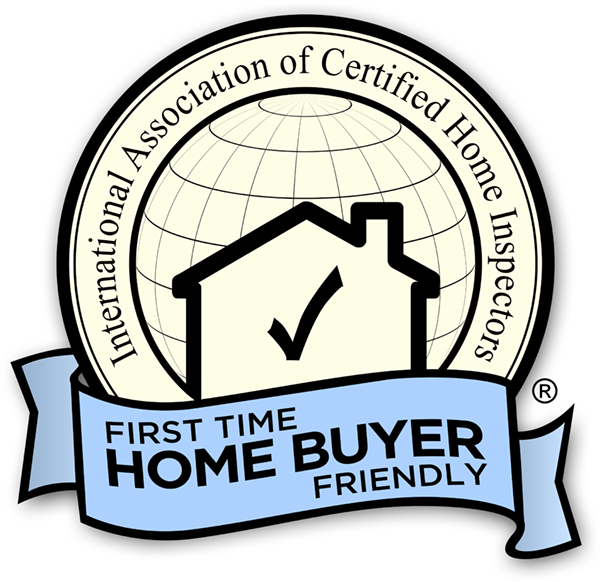


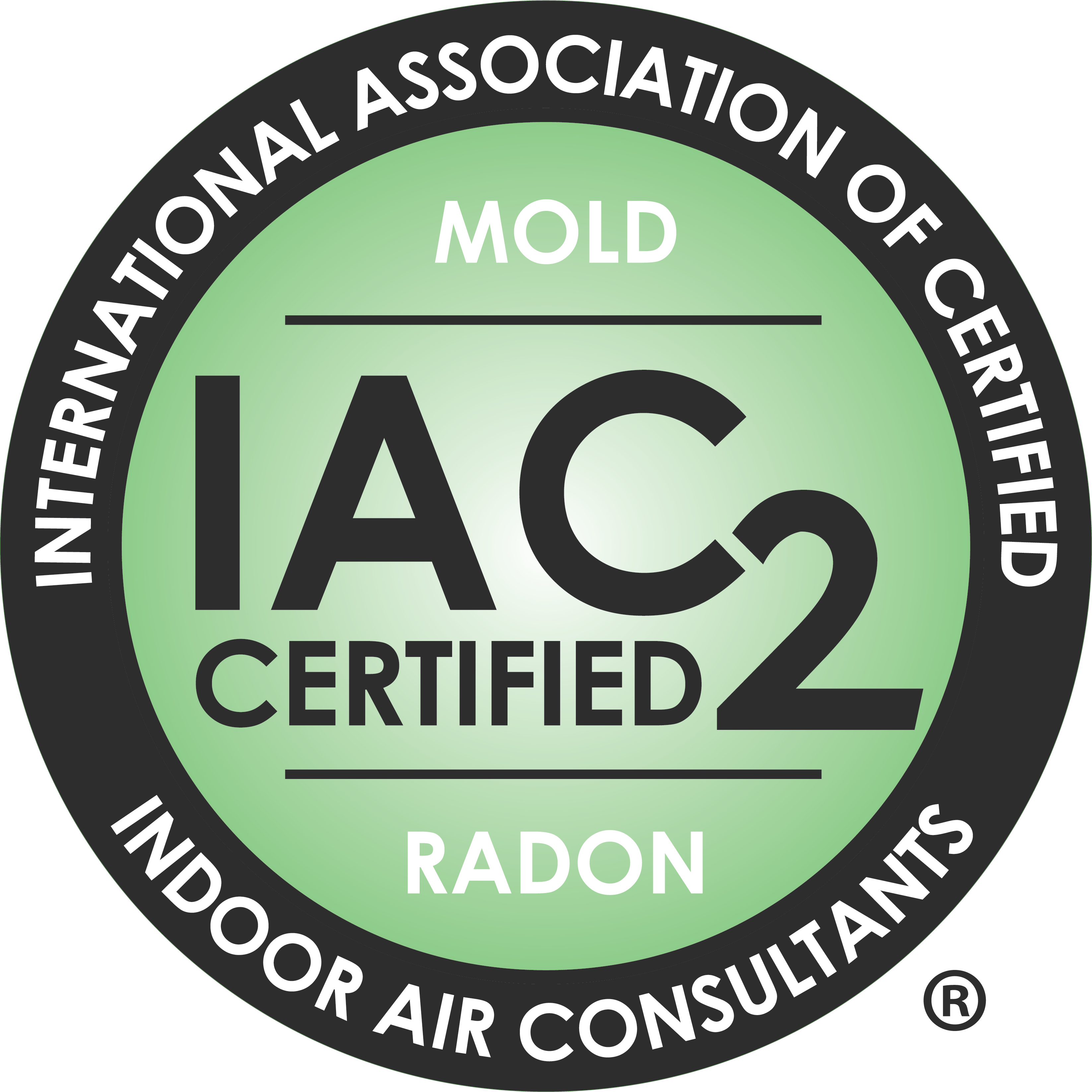

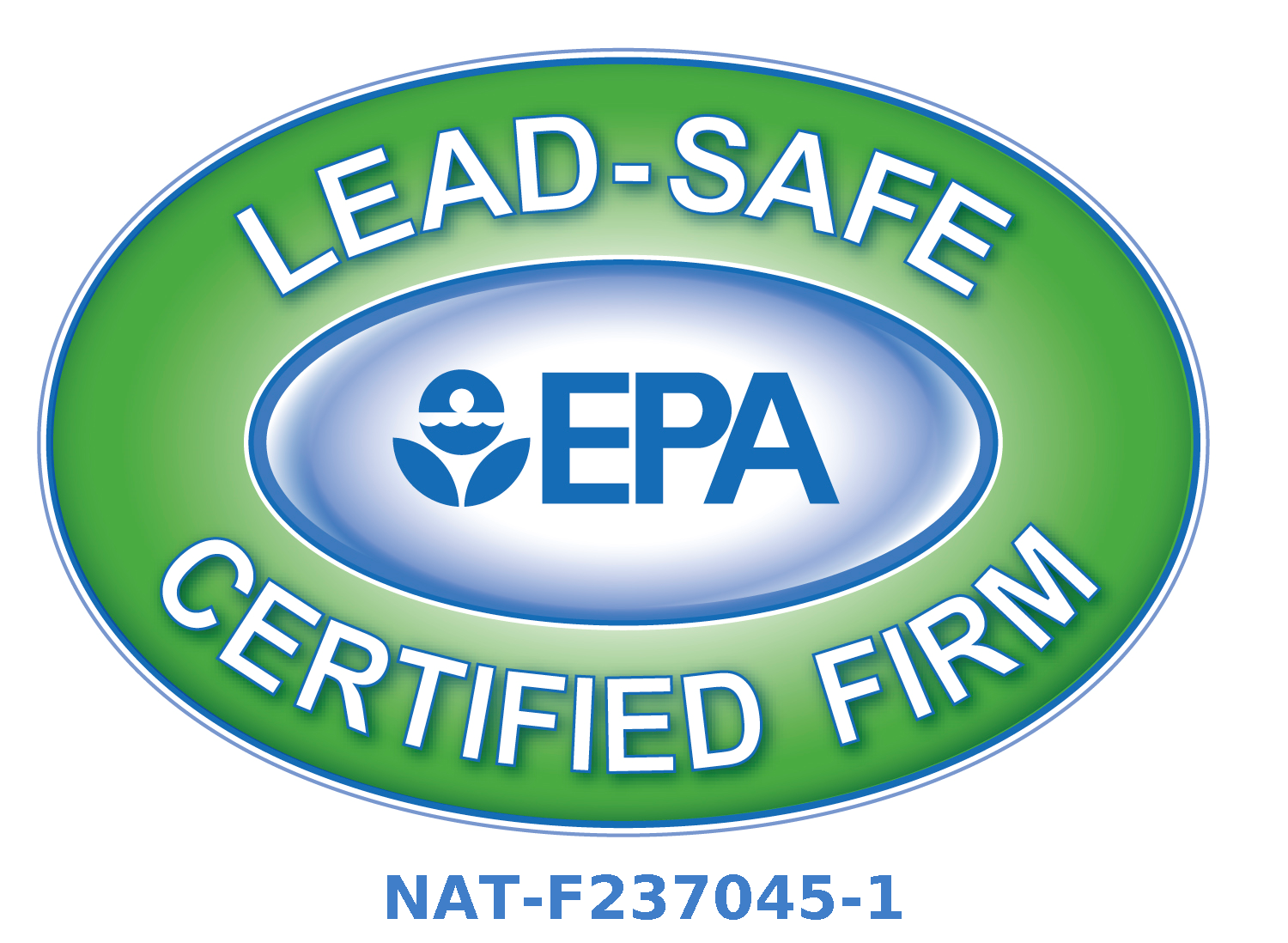
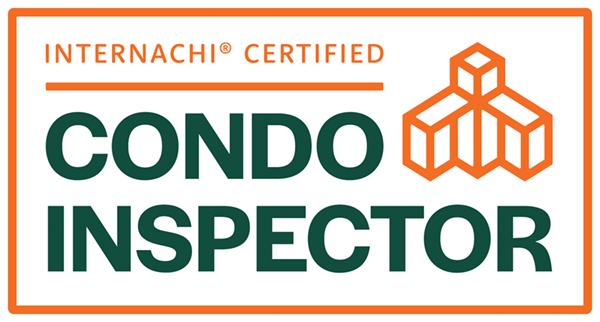

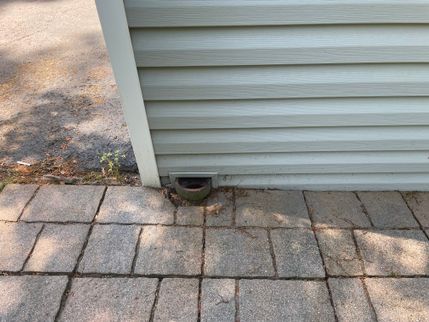
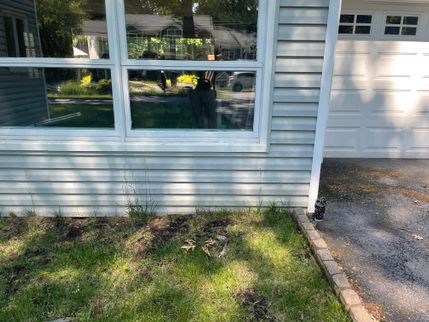
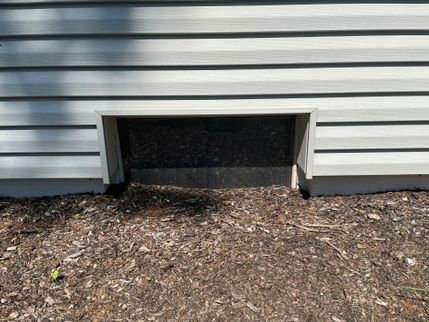
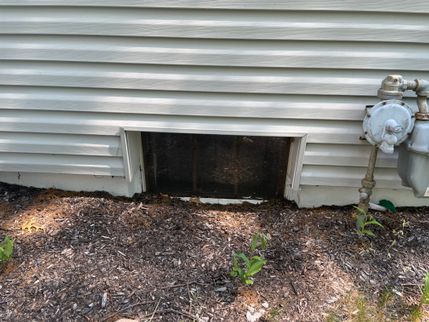

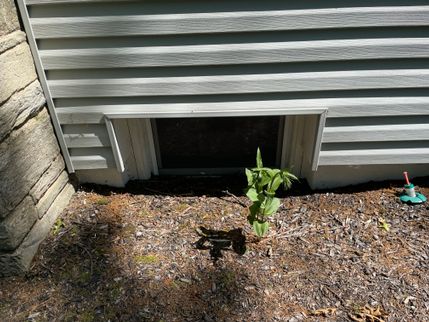
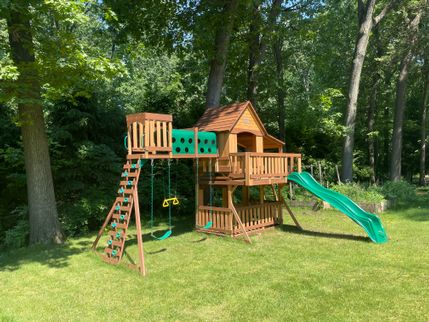
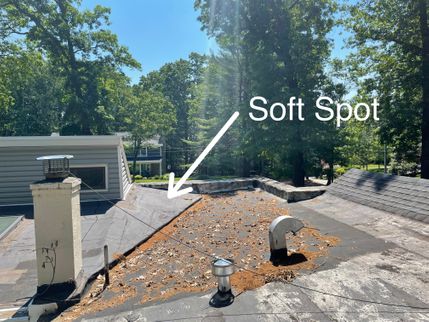
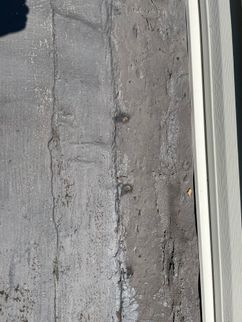


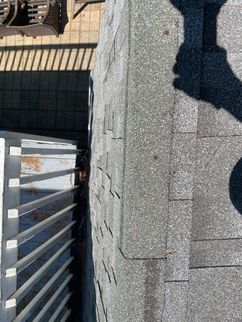
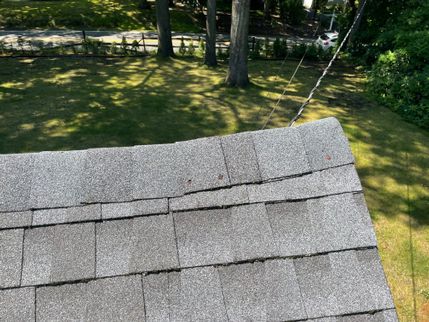

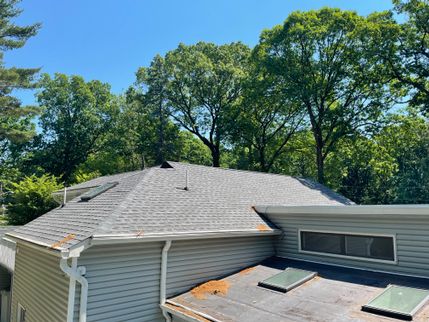
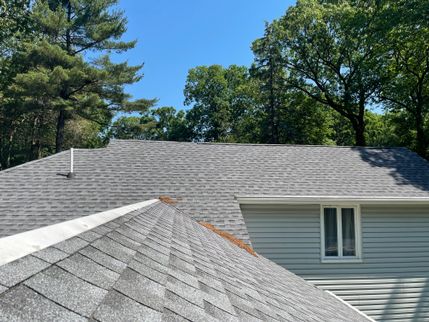
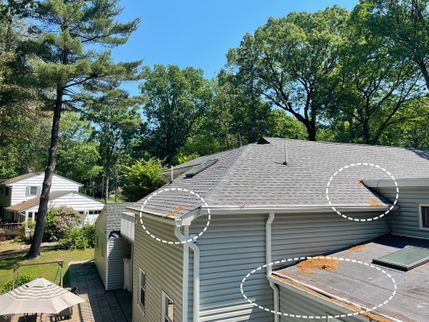

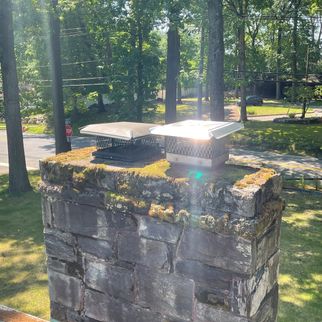
.jpg)
.jpg)

.jpg)

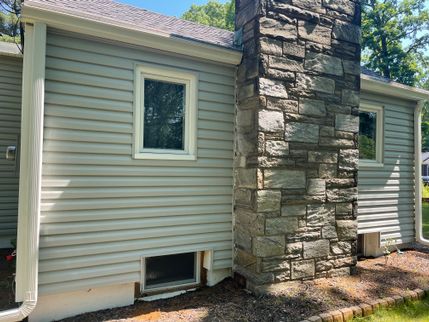
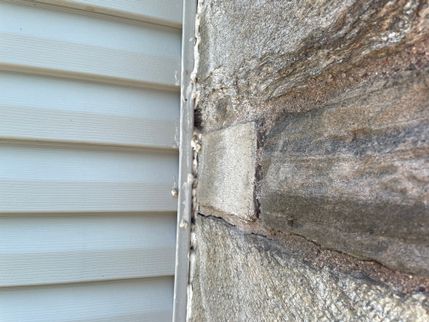
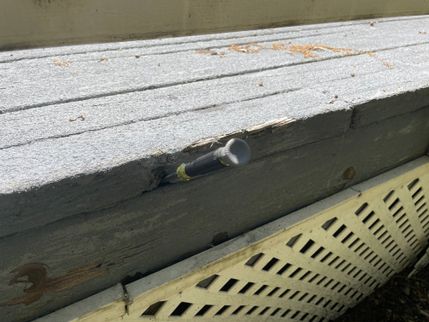
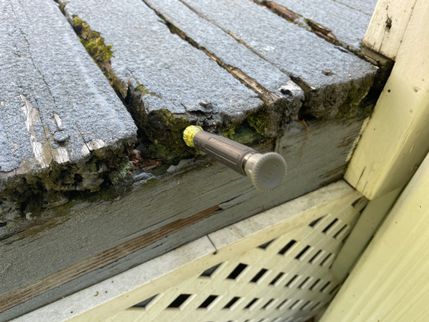
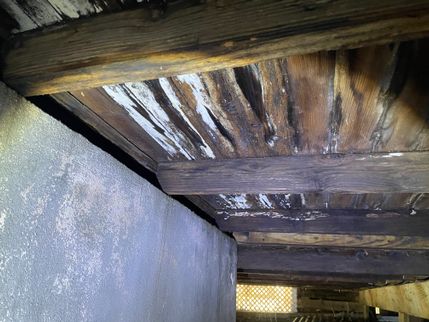



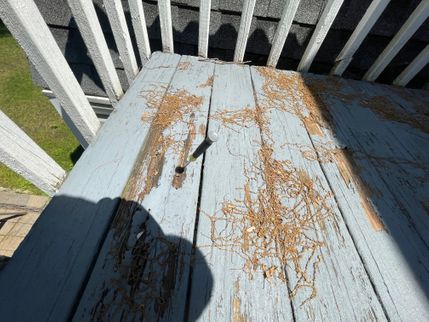
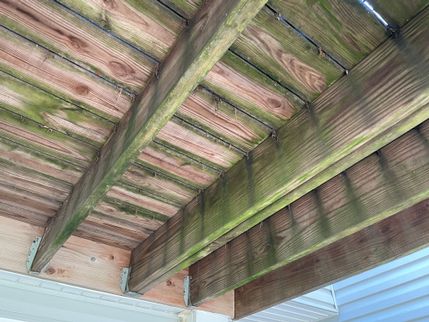

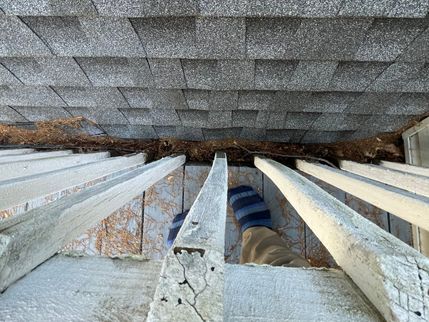
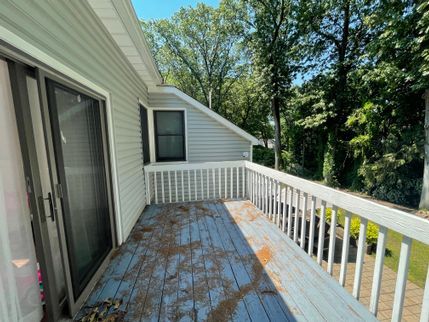
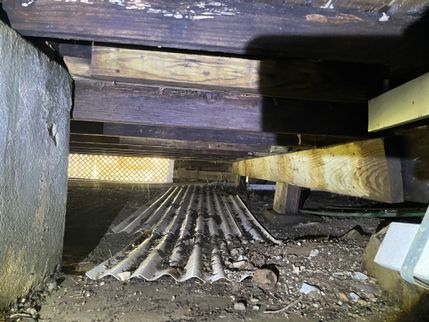

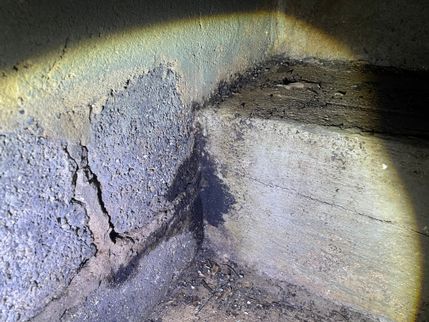


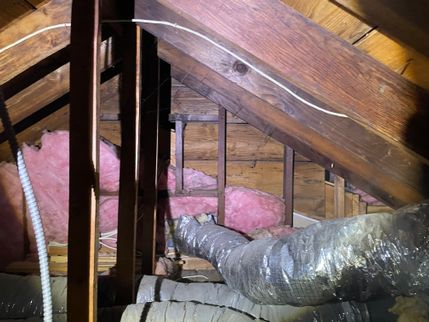
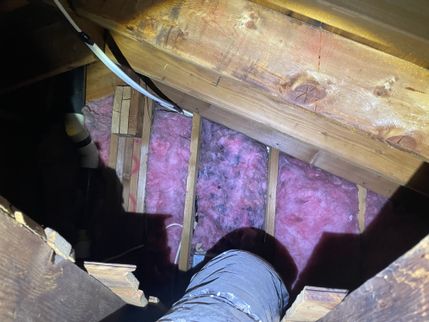

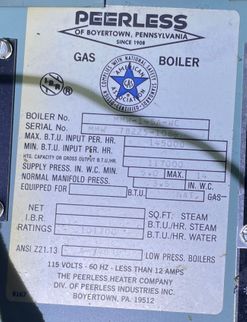
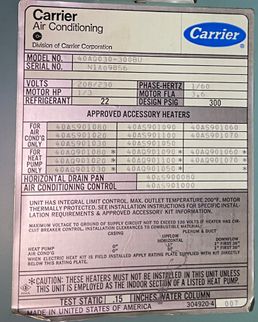



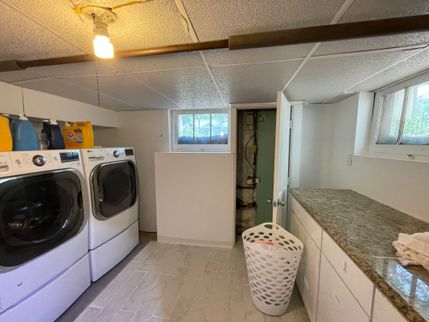

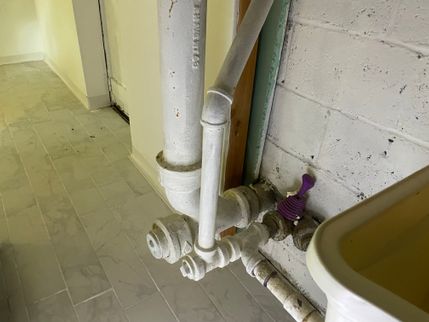
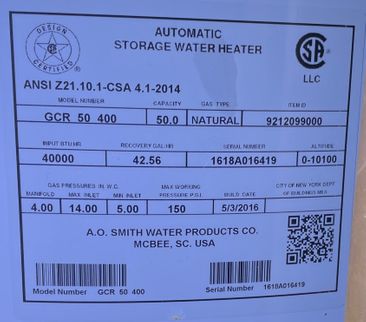
 (1) (1).jpg)

.jpg)
.jpg)
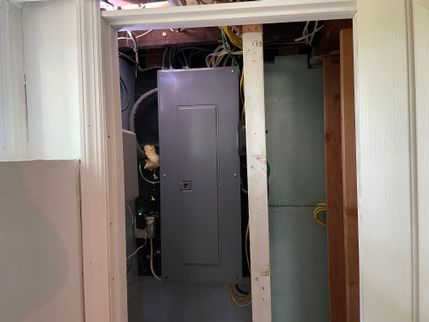
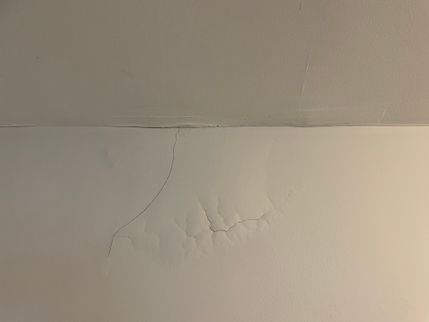
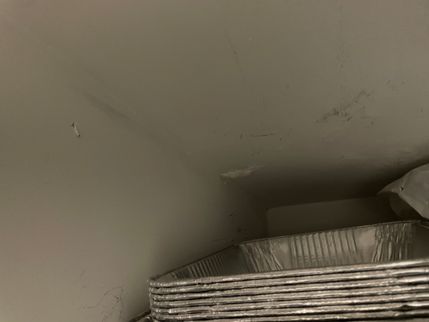
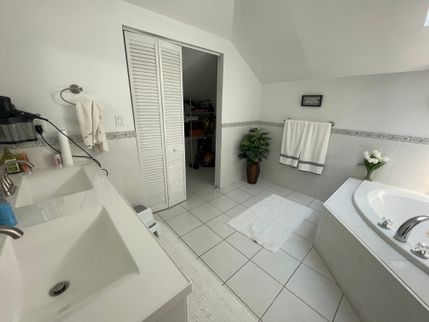
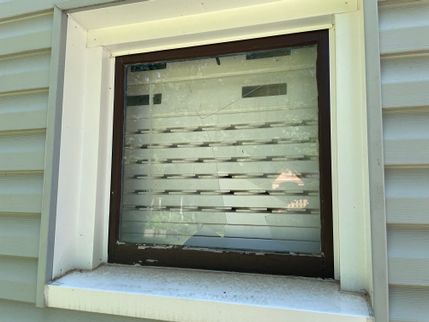
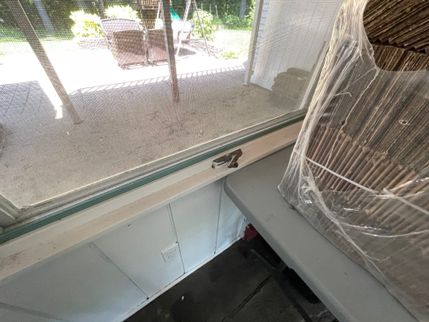



.png)
.png)
